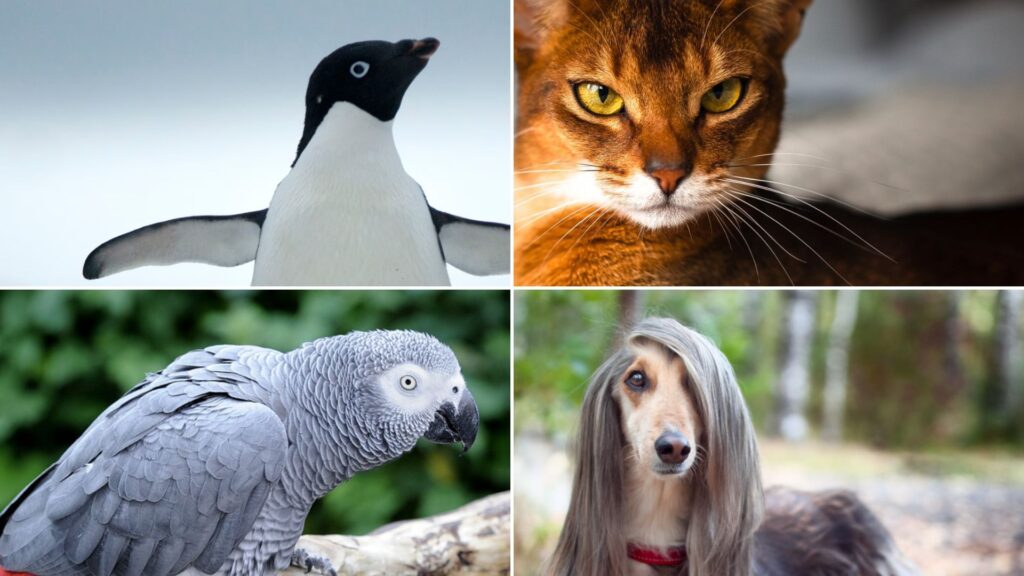Have you ever wondered about the sheer variety of animals that start with the letter A? From tiny insects to massive mammals, the animal kingdom is full of surprises.
“Animals with A” includes some of nature’s most charming creatures. Did you know there’s a cat that can mimic human speech or a bird with a wingspan larger than any other?
Exploring these animals will broaden your understanding of wildlife and inspire you to learn more about conservation efforts.
Whether you’re an animal enthusiast or simply curious, this list has something for everyone.
Join us as we examine 40 remarkable “Animals with A.” From the aardvark to the albatross, prepare to be delighted by the diversity and wonder of these incredible creatures.
Animals Beginning With A
The animal kingdom is vast and varied, with countless engaging creatures populating our planet.
This section will explore various animals with A. From the aardvark to the albatross, these creatures showcase the incredible diversity of life on Earth.
Each animal has unique characteristics, habitats, and behaviors that have evolved over millions of years.
Whether they live in the African savannah, the icy waters of Antarctica, or your backyard, these animals play crucial roles in their respective ecosystems.
1. Aardvark
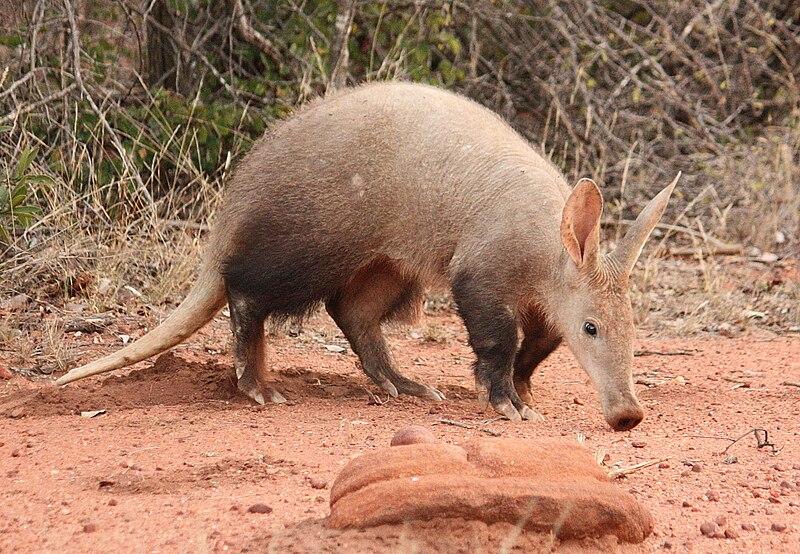
The aardvark is a medium-sized mammal with a long snout, tubular ears, and a thick tail. Its body is covered in coarse hair, and it has strong claws for digging.
Adults typically measure 3.3 to 4.3 feet in length and weigh between 110 to 180 pounds. The aardvark’s most notable feature is its elongated snout, which houses a long, sticky tongue for catching prey.
- Region of Habitat: Sub-Saharan Africa
- Scientific Name: Orycteropus afer
- Place of Origin: Africa
- Feeding Habits: Insectivores, primarily ants and termites
- What Sound They Make: Soft grunts and bleats
Fun Facts: With their strong claws, aardvarks can move 2 feet of soil in just 15 seconds. Their name means “earth pig” in Afrikaans, though they’re unrelated to pigs.
These animals have poor eyesight but an excellent sense of smell, which helps them locate food. Aardvarks are solitary creatures, typically only coming together to mate.
Despite their appearance, they are good swimmers and can hold their breath for up to six minutes.
2. Aardwolf
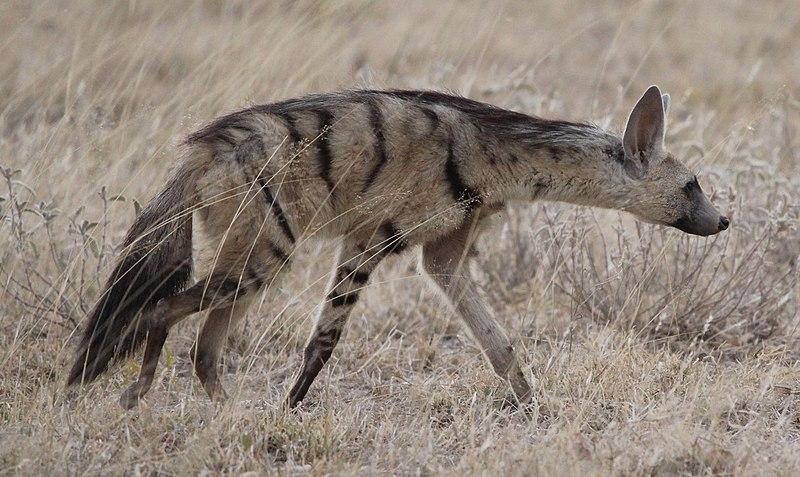
The aardwolf is a small, insectivorous mammal resembling a striped hyena. Its mane runs along its back and can be raised when threatened.
Unlike other hyena species, aardwolves have five toes on their front paws. They typically measure 22 to 31 inches in body length and weigh between 17 and 30 pounds. Their fur is yellow-brown with black stripes.
- Region of Habitat: East and Southern Africa
- Scientific Name: Proteles cristata
- Place of Origin: Africa
- Feeding Habits: Insectivores, primarily termites
- What Sound They Make: Soft clucking sounds, growls when threatened
Fun Facts: Aardwolves play a key role in the ecosystem by controlling termite populations. Unlike other hyenas, they don’t scavenge or hunt large prey.
These animals are mostly active at night and can eat up to 300,000 termites in a single night. Their specialized tooth structure allows them to crush the hard outer shells of insects.
Despite their small size, aardwolves are very protective of their areas and will defend them against intruders.
3. Abyssinian Cat
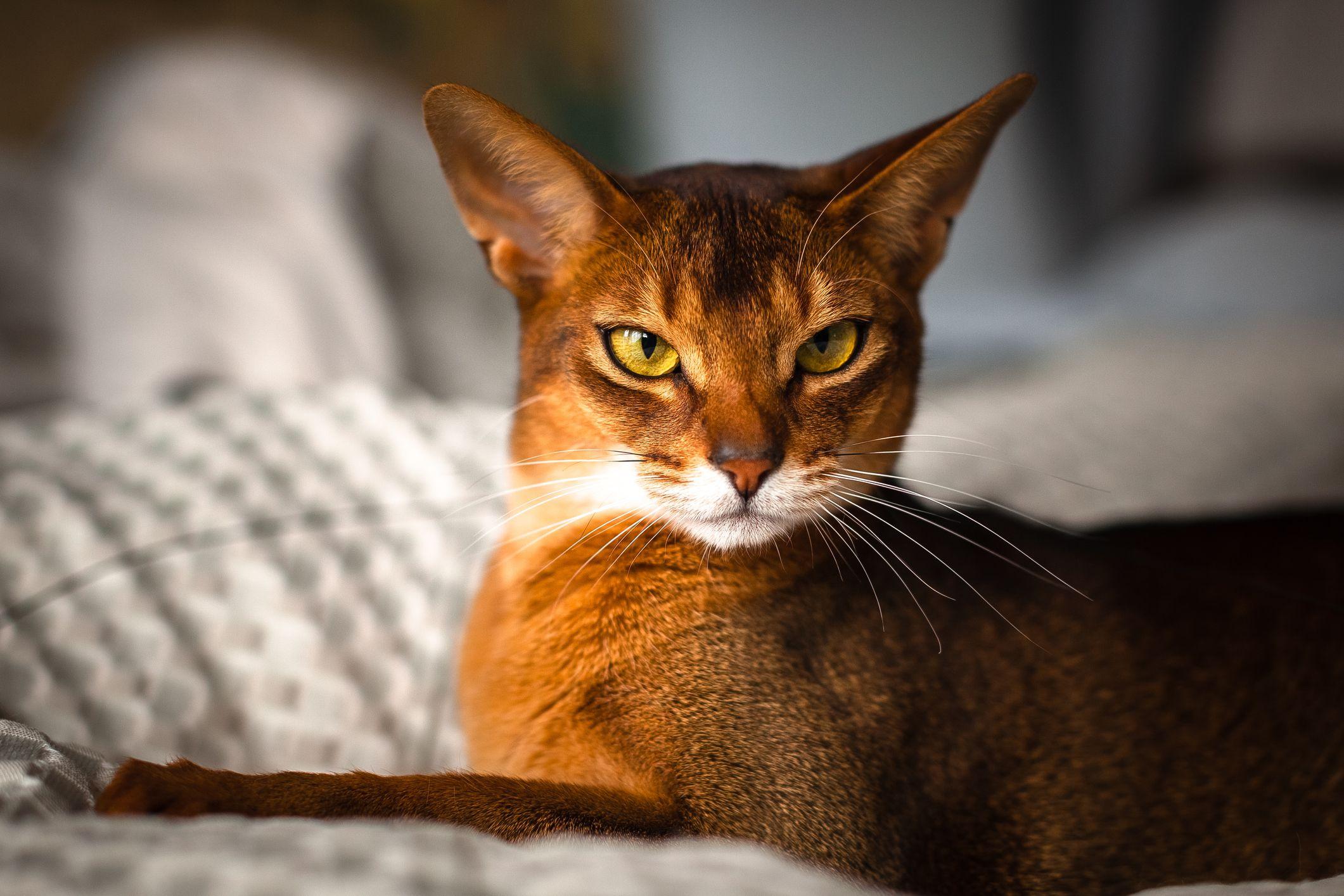
The Abyssinian is a short-haired cat breed known for its distinctive ticked coat, which gives it a wild appearance similar to small African wildcats.
They have a slim, athletic build, long legs, and a wedge-shaped head. Adult Abyssinians typically weigh between 6 and 10 pounds and stand about 8 to 10 inches tall at the shoulder.
Their almond-shaped eyes are often gold, green, or copper in color.
- Region of Habitat: Domestic (worldwide)
- Scientific Name: Felis catus
- Place of Origin: Southeast Asia (contrary to its name)
- Feeding Habits: Carnivore, commercial cat food, and occasional treats
- What Sound They Make: Soft, quiet meows and chirps
Fun Facts: Abyssinians are one of the oldest known cat breeds, with a history dating back to ancient Egypt.
They are very active and smart cats, often described as having dog-like personalities. These cats love heights and are frequently perched on the highest point in a room.
Their coat has a unique ticked pattern, with each hair banded with different colors. Despite their name, genetic studies suggest Abyssinians originated in Southeast Asia rather than Ethiopia (formerly Abyssinia).
4. Abyssinian Guinea Pig
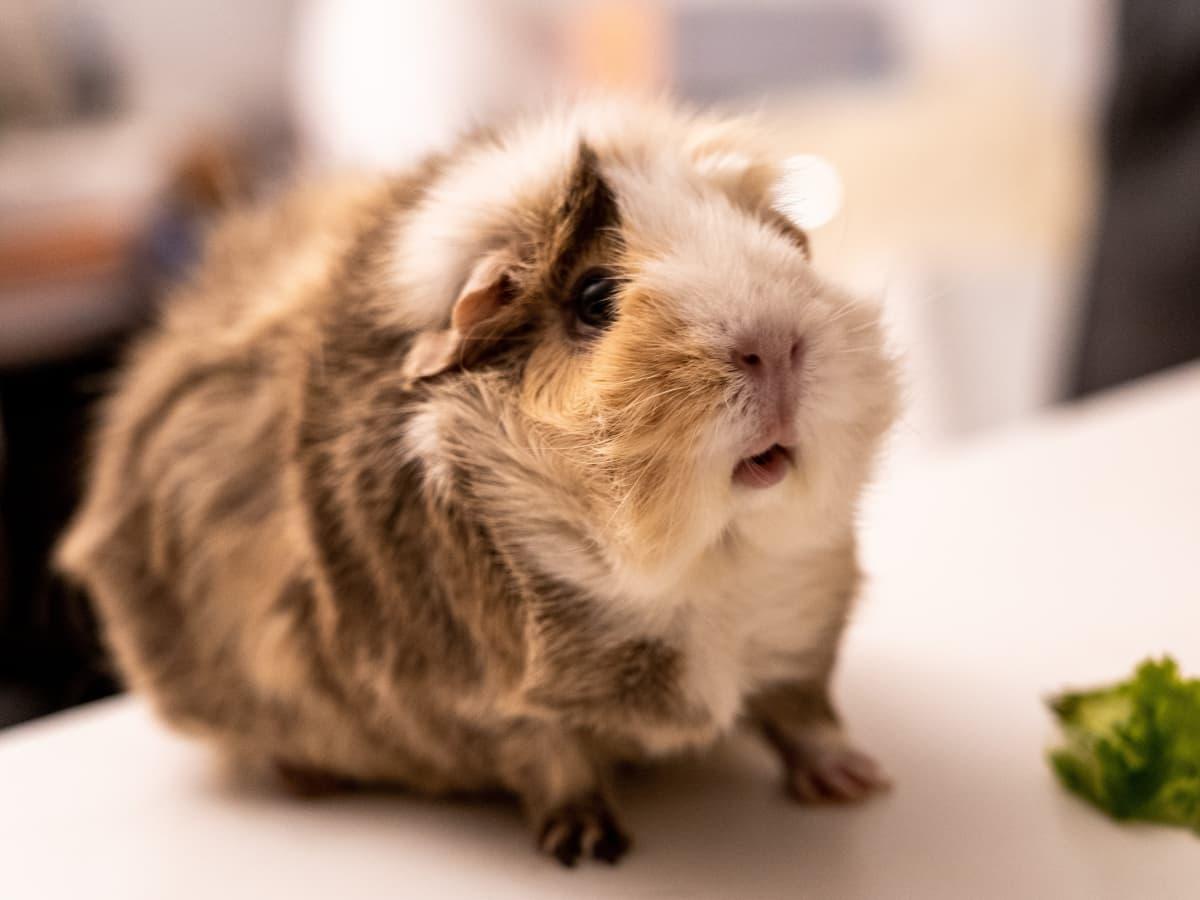
The Abyssinian Guinea Pig is a popular breed known for its distinctive rosette pattern in its fur.
They have a compact body, broad head, and Roman nose. Adults typically weigh 1.5 to 2.5 pounds and measure 8 to 12 inches in length.
Their coat comes in various colors and patterns, with each rosette creating a swirled appearance in the fur.
- Region of Habitat: Domestic (worldwide)
- Scientific Name: Cavia porcellus
- Place of Origin: South America
- Feeding Habits: Herbivore, grass hay, vegetables, and specially formulated guinea pig pellets
- What Sound They Make: Various vocalizations, including wheeks, purrs, and chirps
Fun Facts: Abyssinian Guinea Pigs are one of the oldest breeds of guinea pigs. They’re known for their lively and curious personalities.
These guinea pigs require regular grooming to maintain their unique coat pattern. They have excellent memories and can learn to recognize their owners.
Despite their name, they don’t originate from Abyssinia (modern-day Ethiopia) but were bred in Europe from South American guinea pigs.
5. Acadian Flycatcher
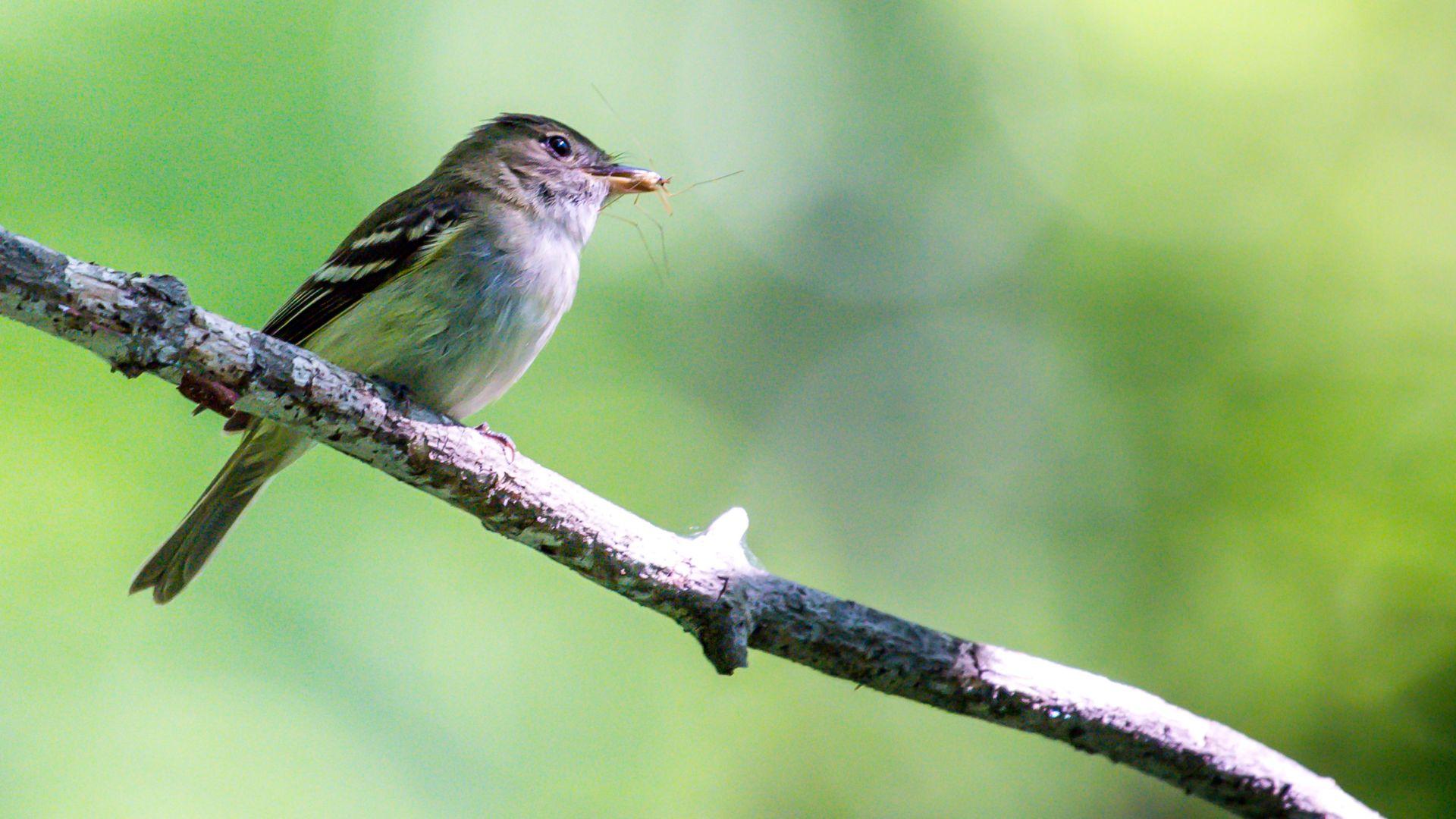
The Acadian Flycatcher is a small songbird with olive-green upperparts and pale underparts.
They have a distinctive white eye ring and two white wing bars. Adults measure about 5.5 to 6.5 inches in length and weigh around 0.4 to 0.5 ounces. They have a small, flat head and a relatively long tail.
- Region of Habitat: Eastern North America, winters in Central and South America
- Scientific Name: Empidonax virescens
- Place of Origin: North America
- Feeding Habits: Insectivore, catching flying insects mid-air
- What Sound They Make: A sharp “peet-sa” call
Fun Facts: Acadian Flycatchers are known for their loosely constructed nests that often look abandoned.
They’re excellent aerial hunters, catching insects in mid-flight. These birds play an important role in controlling insect populations.
They prefer to nest in deciduous forests near streams or wetlands. Despite their name, they’re not closely associated with Acadia; the name comes from a mistaken identification in the 19th century.
6. Achrioptera Manga
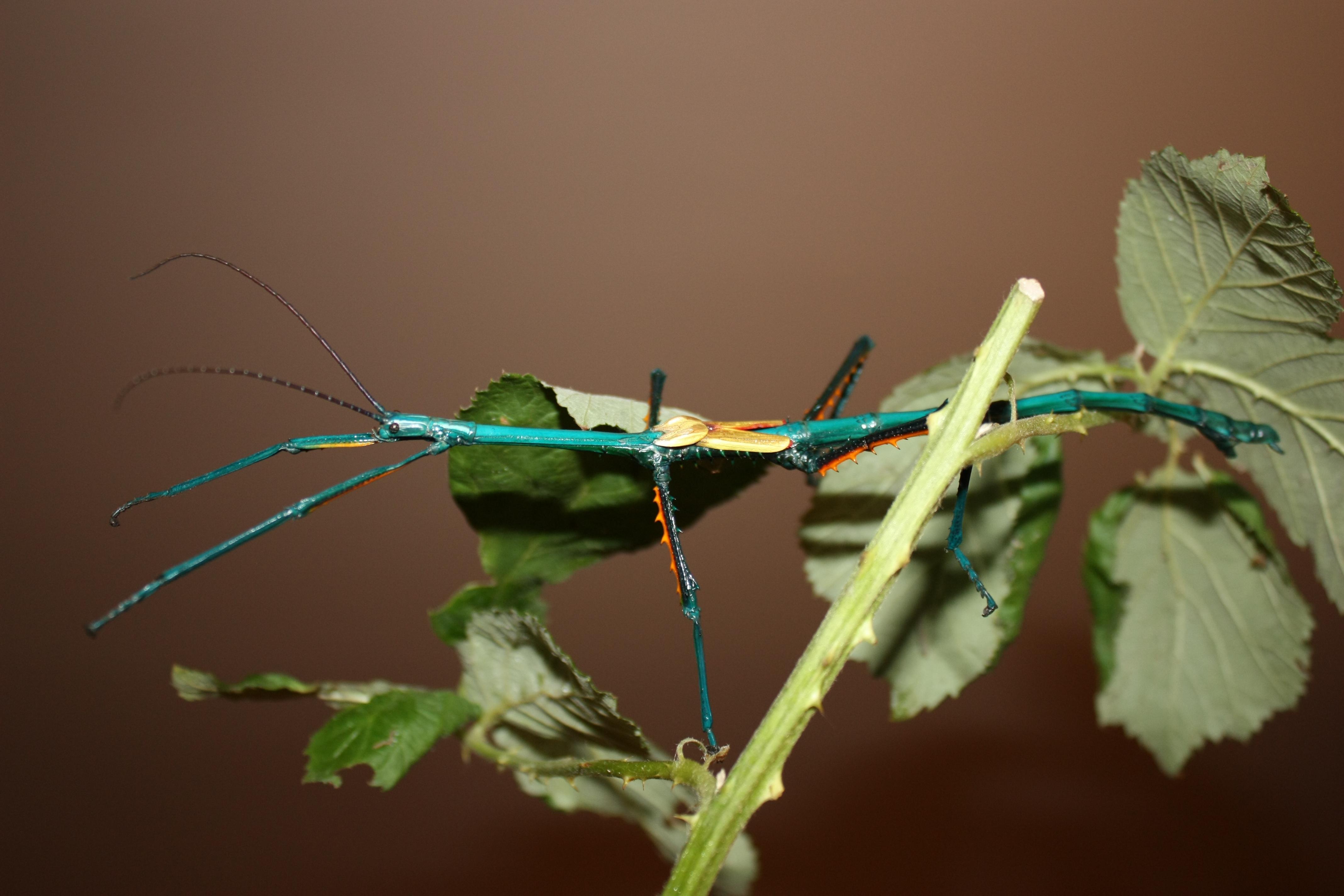
The Achrioptera Manga is a large stick insect native to Madagascar. Its elongated bodies resemble twigs or branches, providing excellent camouflage.
Females can grow up to 8 inches in length, while males are typically smaller. The species’ body color can vary, often including shades of brown, green, and sometimes blue or pink.
- Region of Habitat: Madagascar
- Scientific Name: Achrioptera manga
- Place of Origin: Madagascar
- Feeding Habits: Herbivore, primarily feeding on leaves
- What Sound They Make: Generally silent, may produce rustling sounds when moving
Fun Facts: Achrioptera Manga can mate year-round, unlike many other stick insect species. They can regrow lost limbs, which is useful for escaping predators.
Their appearance so closely mimics twigs and leaves that predators often overlook them. These insects are popular in the pet trade due to their unique appearance and relatively easy care requirements.
They play a role in their ecosystem by helping to control plant growth through their feeding habits.
7. Ackie Monitor
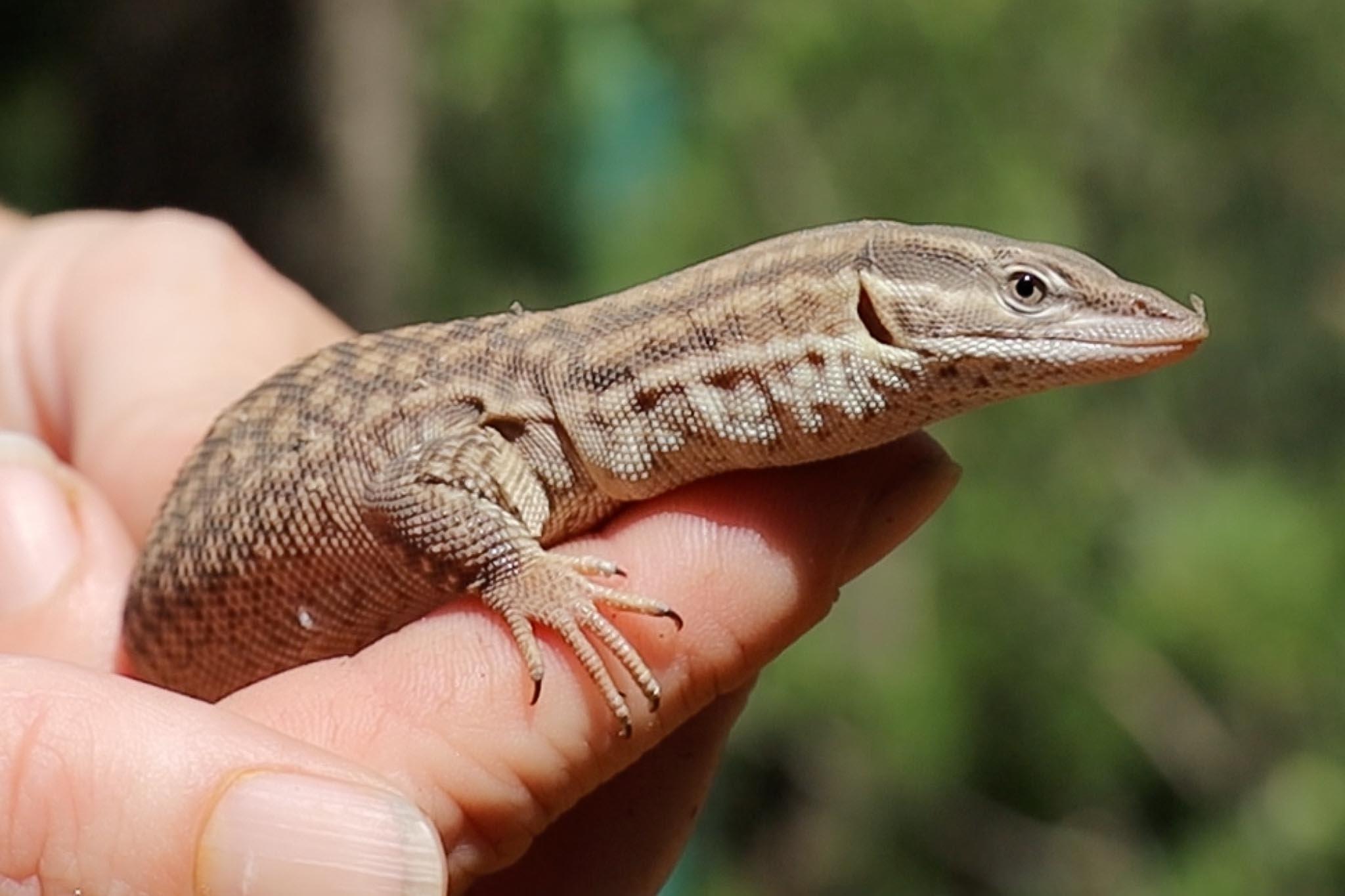
The Ackie Monitor, also known as the Spiny-tailed Monitor, is a small to medium-sized lizard native to Australia.
It has a sturdy build and a long neck and tail. Adults typically reach lengths of 24 to 28 inches and weigh between 0.5 and 1.5 pounds.
Their skin is rough and scaly, often in shades of brown or reddish-brown with pale spots.
- Region of Habitat: Australia
- Scientific Name: Varanus Acanthurus
- Place of Origin: Australia
- Feeding Habits: Carnivores, insects, small mammals, and other lizards
- What Sound They Make: Hissing when threatened
Fun Facts: Ackie Monitors use their spiny tails for self-defense, whipping them at potential threats.
They’re one of the smaller monitor lizard species, making them popular in the pet trade. These lizards can run on their hind legs when moving quickly.
They have a keen sense of smell and use their forked tongues to “taste” the air. In the wild, they often live in rocky areas and are excellent climbers.
8. Addax
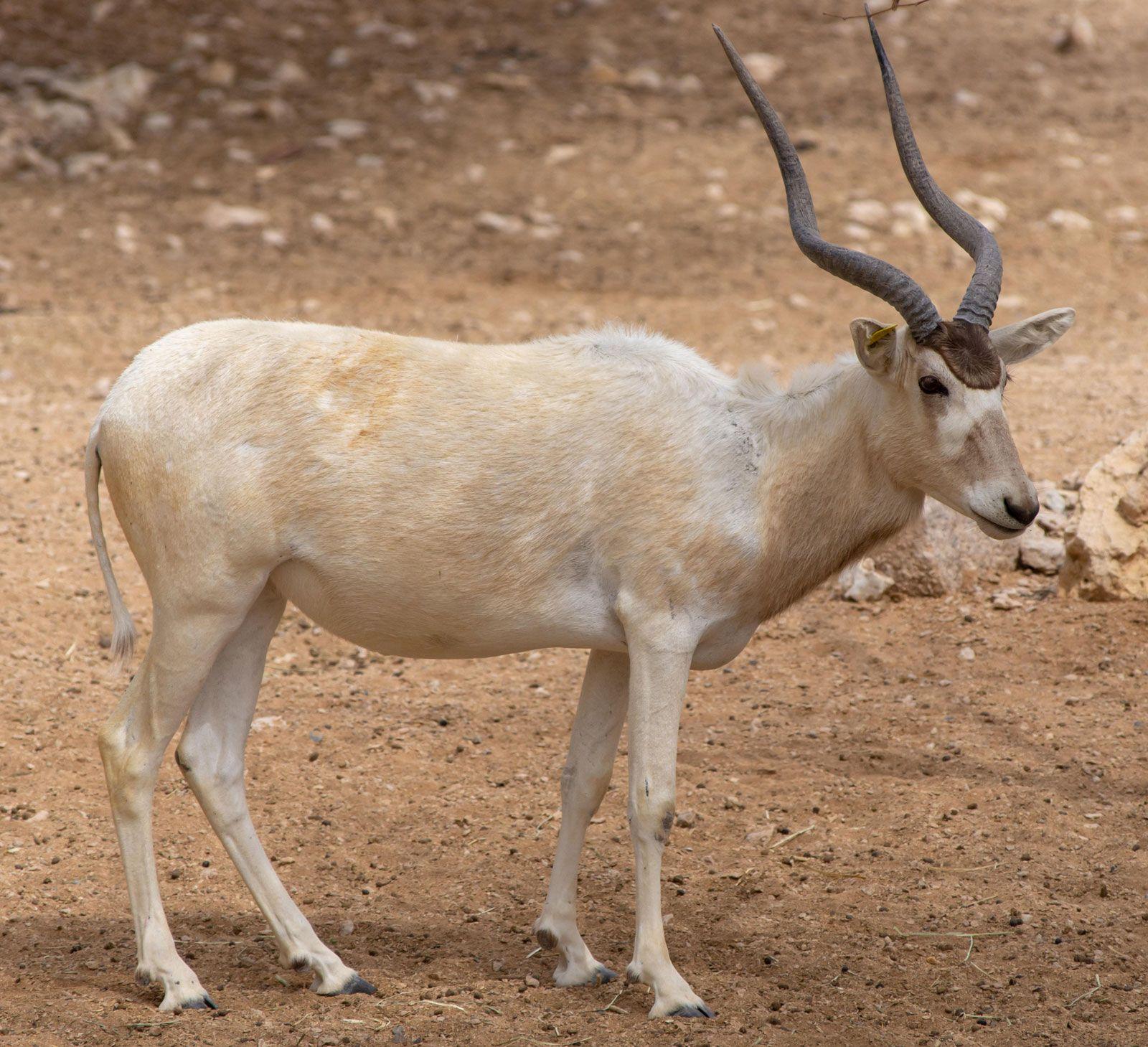
The Addax is a critically endangered antelope native to the Sahara desert. It is stocky and has long, twisted horns and large, splayed hooves adapted for walking on sand.
Adults stand about 3 to 3.5 feet at the shoulder and weigh between 132 and 275 pounds.
Their coat color changes seasonally, from grayish-brown in winter to nearly white in summer.
- Region of Habitat: Sahara Desert in North Africa
- Scientific Name: Addax nasomaculatus
- Place of Origin: North Africa
- Feeding Habits: Herbivore, grasses, leaves, and desert plants
- What Sound They Make: Soft moans and grunts
Fun Facts: Addax are supremely adapted to their desert environment. Their splayed hooves help them walk on sand without sinking.
These antelopes can go their entire lives without drinking water, getting all the moisture they need from the plants they eat.
They’re critically endangered in the wild, with fewer than 100 individuals estimated to remain in their natural habitat.
Addax can detect rainfall from great distances and will travel to areas where plants are growing.
9. Adélie Penguin
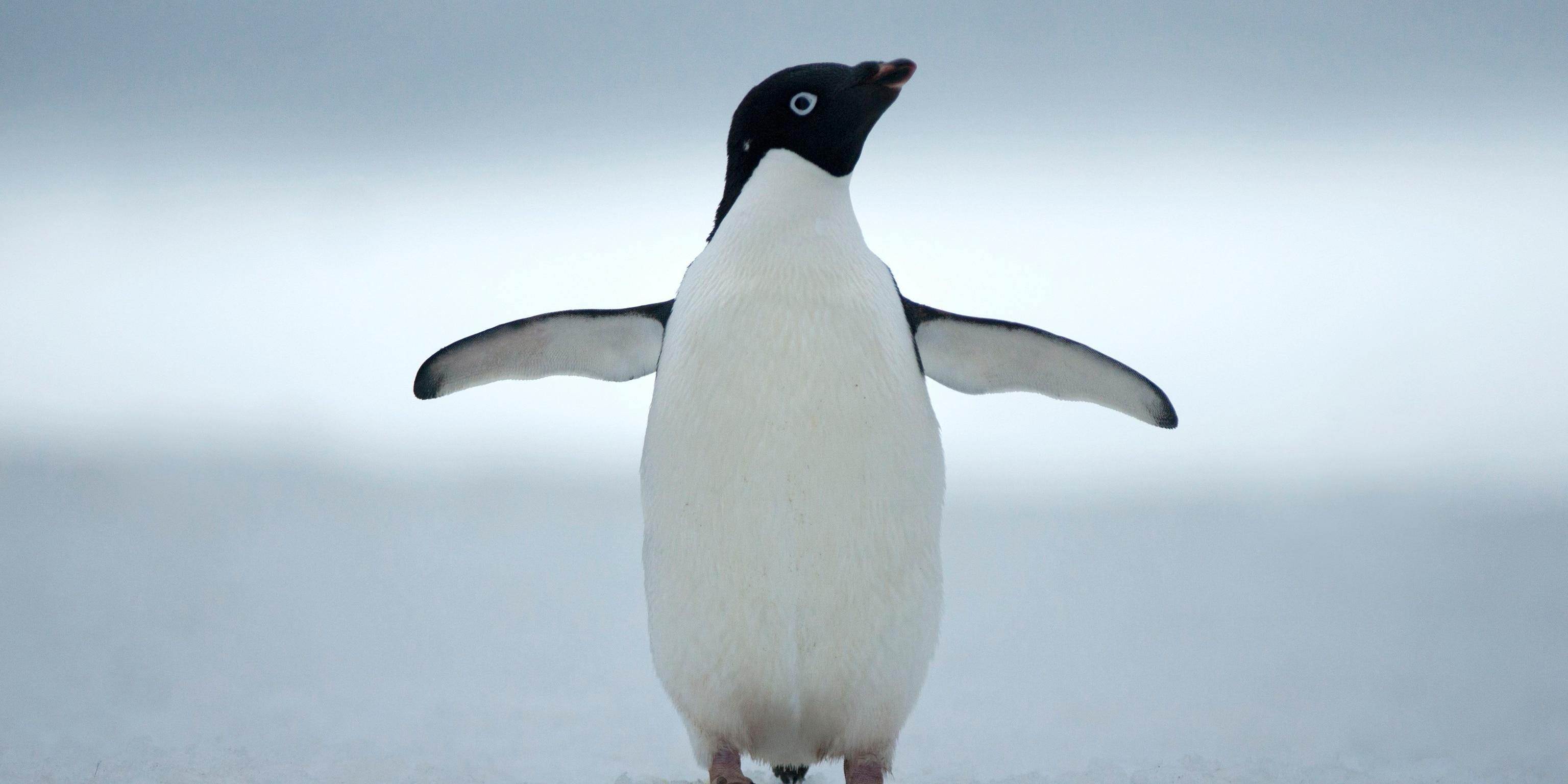
The Adélie Penguin is a medium-sized penguin species native to the Antarctic coast. It has a distinctive appearance, with a black head featuring a white ring around each eye.
Adults stand about 28 inches tall and weigh between 8.5 and 12 pounds. Their streamlined body shape is perfect for swimming in cold Antarctic waters.
- Region of Habitat: Antarctic coast and nearby islands
- Scientific Name: Pygoscelis adeliae
- Place of Origin: Antarctica
- Feeding Habits: Carnivore, primarily krill and small fish
- What Sound They Make: Harsh squawks and trumpeting calls
Fun Facts: Adélie Penguins can eat up to 2kg of food daily during the breeding season. They’re known for their comical waddling walk on land but are graceful and swift swimmers.
These penguins have been known to sled on their bellies to conserve energy when traveling on ice. They can dive up to 175 meters deep in search of food.
Adélie Penguins are indicators of climate change, with their populations fluctuating in response to changes in sea ice conditions.
10. Admiral Butterfly
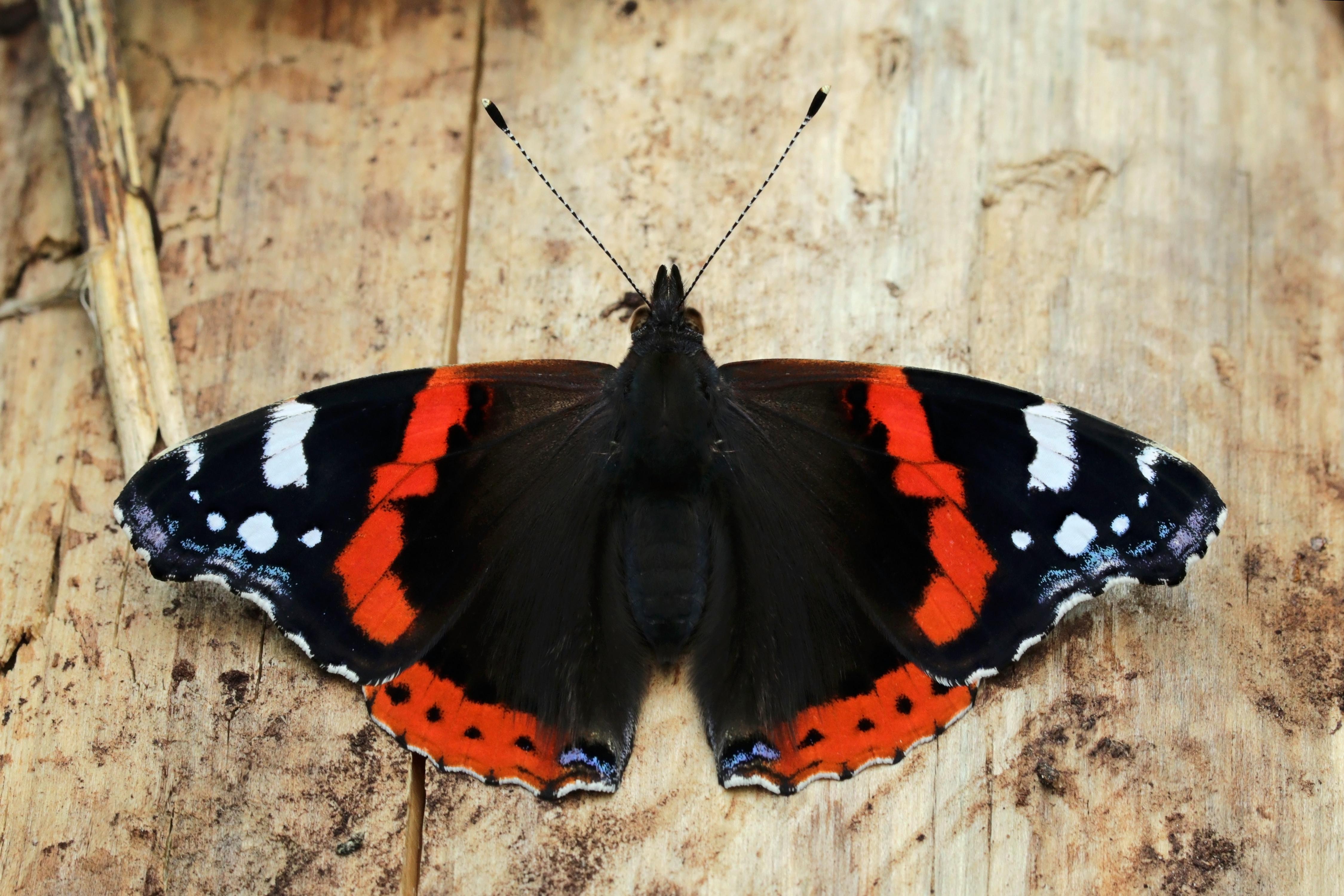
The Admiral Butterfly is a large and colorful butterfly species in many parts of the world.
Depending on the specific species, its wingspan ranges from 45 to 75 mm. Its wings typically feature bold patterns of black, white, and red or orange, and the underside of its wings often has a camouflage pattern.
- Region of Habitat: Various, including North America, Europe, and Asia
- Scientific Name: Varies by species (e.g., Vanessa Atalanta for Red Admiral)
- Place of Origin: Widespread across the Northern Hemisphere
- Feeding Habits: Nectar from flowers, overripe fruit
- What Sound They Make: Silent, like most butterflies
Fun Facts: Admiral butterflies get their name from wing patterns resembling military insignia.
Some species, like the Red Admiral, are known for their territorial behavior. Males defend small areas against intruders, and these butterflies are capable of long-distance migration.
They have a unique defense mechanism where they can rapidly open and close their wings to startle predators.
In some cultures, Admiral butterflies are seen as symbols of transformation and renewal.
11. Aesculapian Snake
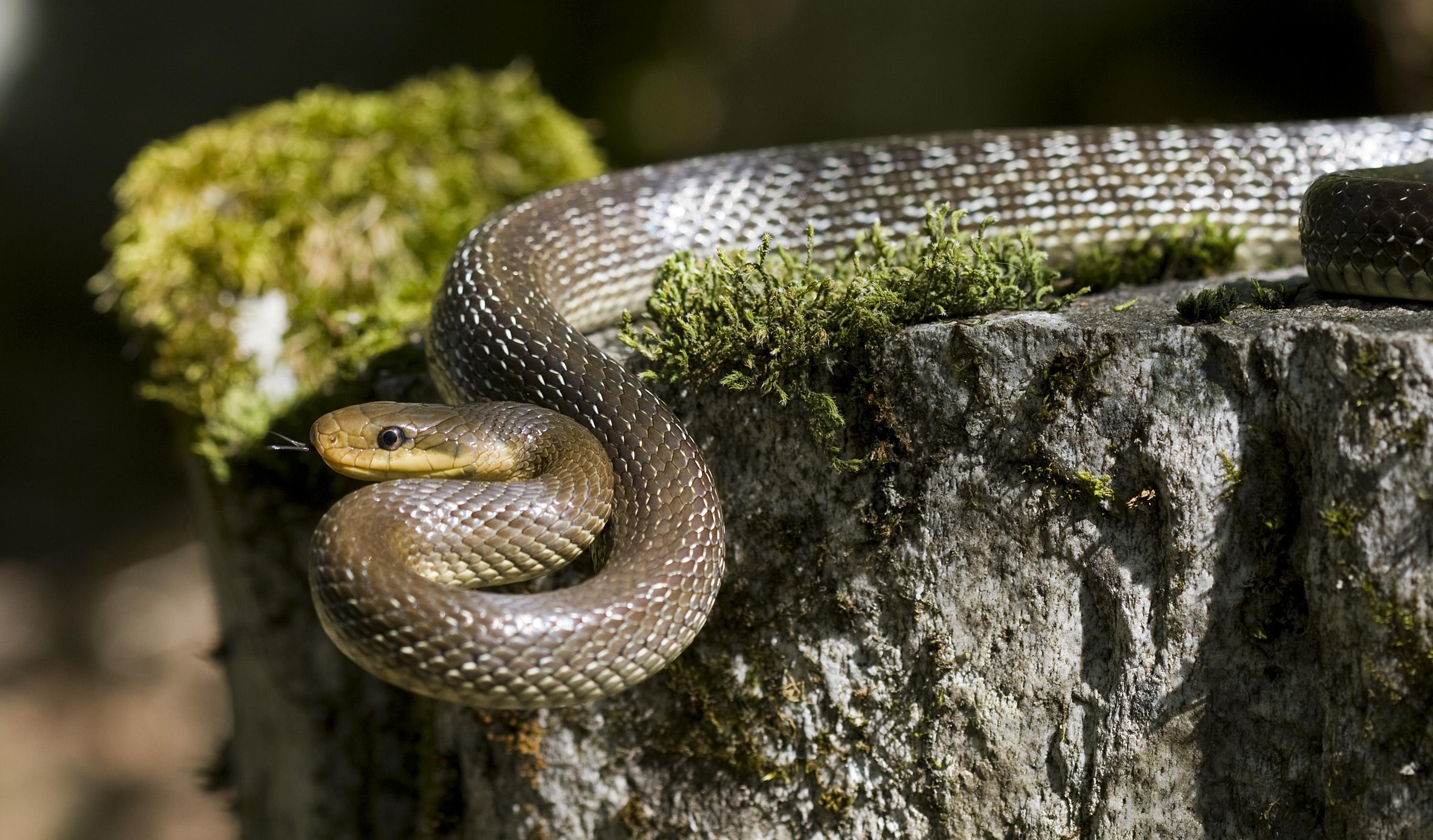
The Aesculapian Snake is one of Europe’s longest snakes, reaching lengths up to 6 feet. It has a slender body with smooth scales that are typically brown or olive.
The snake’s belly is usually a pale yellow or white. Adults weigh between 1 to 3 pounds. They have round pupils and a slightly pointed snout.
- Region of Habitat: Central and Southern Europe
- Scientific Name: Zamenis longissimus
- Place of Origin: Europe
- Feeding Habits: Carnivores, small mammals, birds, and lizards
- What Sound They Make: Generally silent, may hiss when threatened
Fun Facts: Aesculapian Snakes are excellent climbers and can scale vertical walls. In Greek mythology, they were associated with Asclepius, the god of healing.
These snakes are non-venomous and generally harmless to humans. They play a crucial role in controlling rodent populations in their habitats.
Despite their size, Aesculapian Snakes are shy and avoid human contact.
12. Affenpinscher
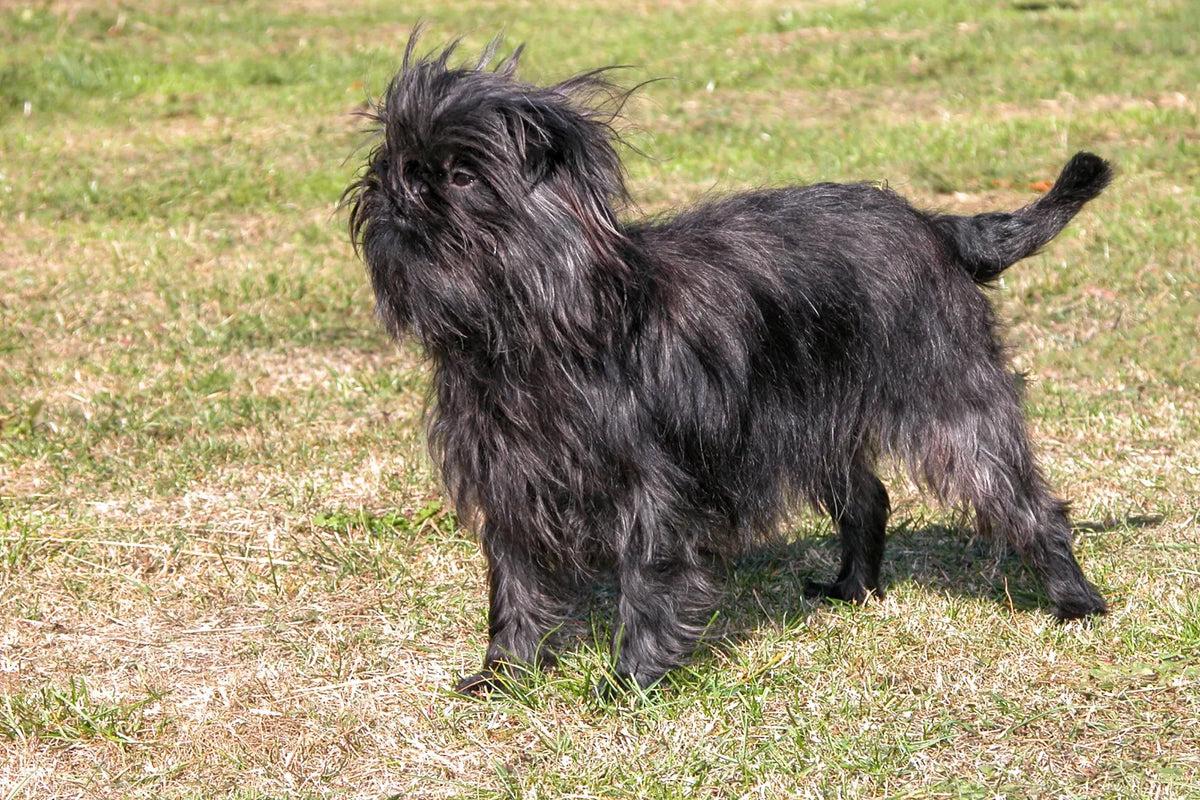
The Affenpinscher is a small terrier-like toy dog breed. It has a compact body and a short, thick coat that’s typically black but can also be gray, silver, or red.
Adults stand about 9 to 11.5 inches tall at the shoulder and weigh between 7 and 10 pounds.
They have a distinctive monkey-like face with a short muzzle and prominent eyes.
- Region of Habitat: Domestic (worldwide)
- Scientific Name: Canis lupus familiaris
- Place of Origin: Germany
- Feeding Habits: Omnivore, commercial dog food and occasional treats
- What Sound They Make: Barks, yaps, and growls
Fun Facts: Affenpinschers were first bred in Germany in the 17th century to hunt rats. Their name means “monkey-like terrier” in German, referring to their unique facial appearance.
These dogs are often called “mustached little devils” due to their looks and feisty personality. Despite their small size, Affenpinschers are fearless and can be protective of their owners.
They’re known for their comedic antics and are popular as companion dogs.
13. Afghan Hound

The Afghan Hound is a large breed known for its luxurious, silky coat and regal appearance. It has a tall, slender build, a long, narrow head, and hanging ears.
Adults stand about 25 to 27 inches tall at the shoulder and weigh between 50 to 60 pounds. Their coat can come in various colors and patterns.
- Region of Habitat: Domestic (worldwide)
- Scientific Name: Canis lupus familiaris
- Place of Origin: Afghanistan
- Feeding Habits: Omnivore, commercial dog food and occasional treats
- What Sound They Make: Barks, howls, and whines
Fun Facts: Afghan Hounds are one of the oldest dog breeds, with a history dating back thousands of years.
Their long coats protected them in Afghanistan’s harsh mountain climate. These dogs can run up to 40 mph, making them one of the fastest dog breeds.
Afghan Hounds have a unique hunting style, using their keen eyesight rather than scent to track prey.
Despite their elegant appearance, they’re known for their playful and sometimes clownish behavior.
14. African Bullfrog
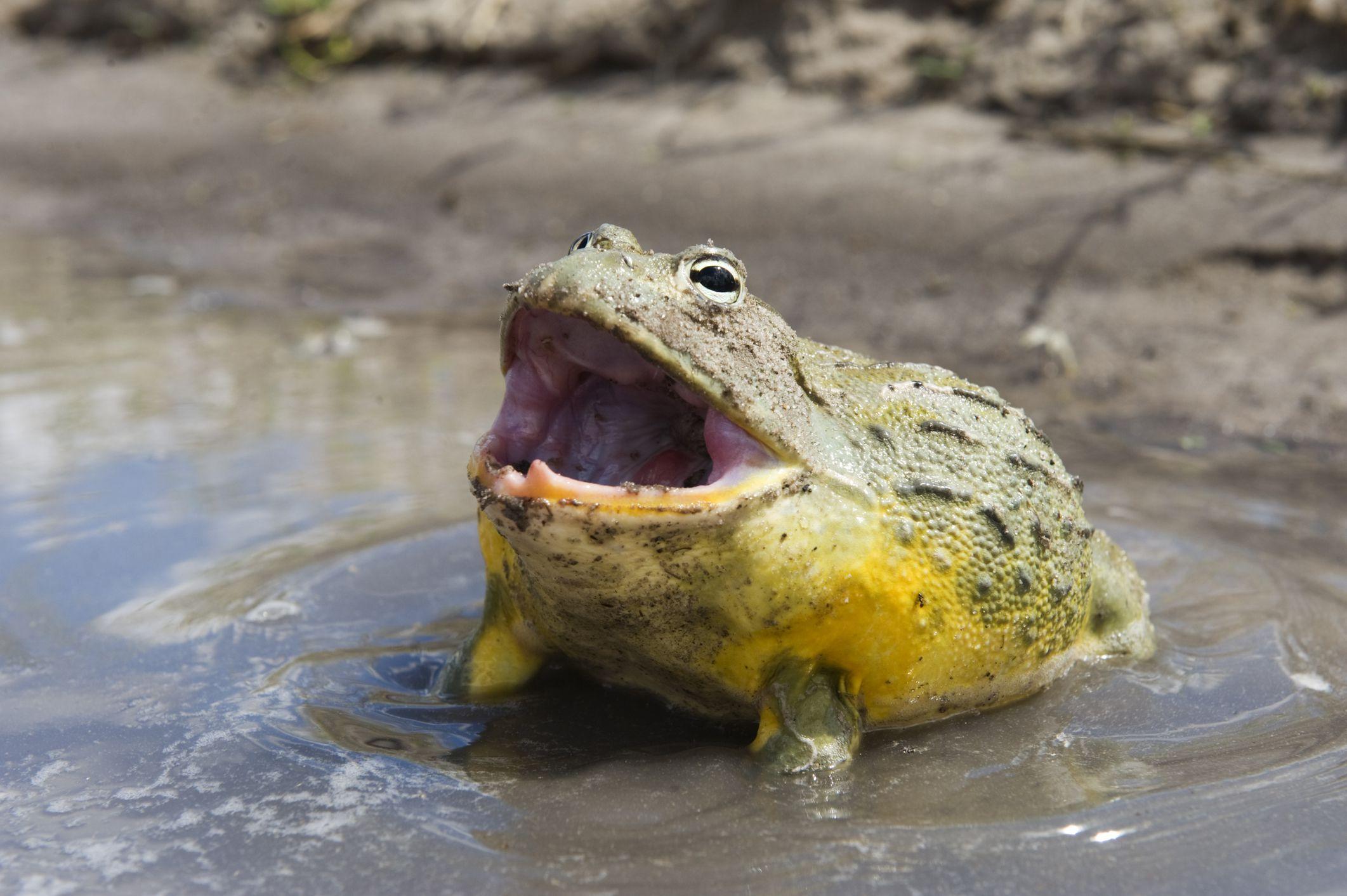
The African Bullfrog is a large frog species native to parts of Africa. It has a mighty, round body, a large head, and powerful legs.
Adults can grow up to 9 inches in length and weigh over 2 pounds, making it one of the largest frog species. Their skin is typically olive green to brownish-green with darker spots.
- Region of Habitat: Sub-Saharan Africa
- Scientific Name: Pyxicephalus adspersus
- Place of Origin: Africa
- Feeding Habits: Carnivores, insects, small mammals, birds, and other frogs
- What Sound They Make: Deep, resonant croak
Fun Facts: African Bullfrogs are one of the few frog species with teeth-like structures called odontoids. Males can become extremely territorial during the breeding season.
These frogs can survive long periods of drought by burrowing into the ground and secreting a cocoon to prevent water loss.
They’re known for their voracious appetite and will attempt to eat almost anything they can fit in their mouths. In some African cultures, these frogs are considered a delicacy.
15. African Bush Elephant
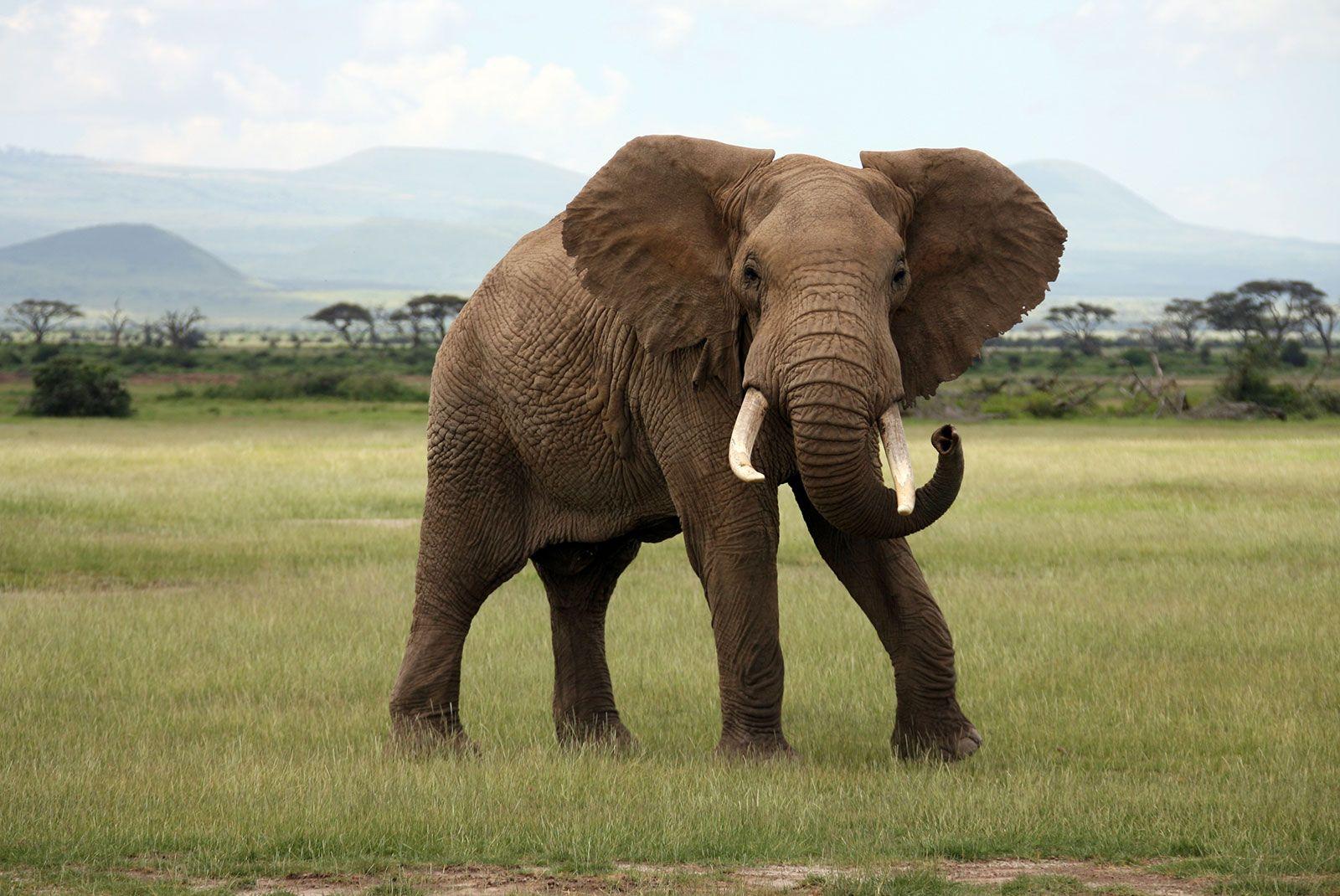
The African Bush Elephant is the largest land animal on Earth. It has a massive body, large ears, and long tusks.
Adults can reach heights of 8.2 to 13 feet at the shoulder and weigh between 4,000 and 13,000 pounds. Their thick, wrinkled skin is typically gray and sparsely covered with hair.
- Region of Habitat: Sub-Saharan Africa
- Scientific Name: Loxodonta africana
- Place of Origin: Africa
- Feeding Habits: Herbivore, grass, fruits, roots, and bark
- What Sound They Make: Various vocalizations, including trumpets, rumbles, and infrasound
Fun Facts: African Bush Elephants can drink up to 50 gallons of water daily. Their tusks never stop growing throughout their lives.
These elephants can communicate over long distances using low-frequency sounds humans can’t hear.
They’re known for their intelligence and complex social structures. African Bush Elephants play a crucial role in their ecosystems, often referred to as “ecosystem engineers” for their ability to modify their habitats.
16. African Civet
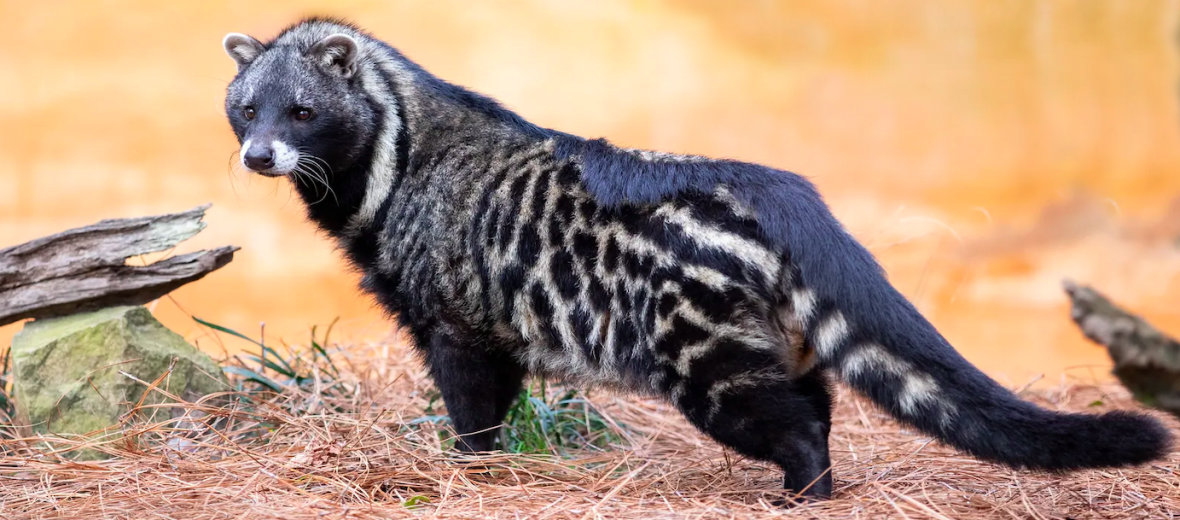
The African Civet is a medium-sized mammal with a distinctive appearance. It has a long body, short legs, and a face that resembles a raccoon’s.
Adults typically measure 26 to 34 inches in body length, with a tail adding another 13 to 20 inches.
They weigh between 15 and 44 pounds. Their fur is coarse and grayish with black spots and stripes.
- Region of Habitat: Sub-Saharan Africa
- Scientific Name: Civettictis civetta
- Place of Origin: Africa
- Feeding Habits: Omnivore, small vertebrates, insects, fruits, and eggs
- What Sound They Make: Various vocalizations, including growls and yelps
Fun Facts: African Civets produce a musky secretion used in perfume-making, secreting up to 4g weekly.
Despite their cat-like appearance, they’re more closely related to mongooses. These animals have excellent night vision and are mostly nocturnal.
African Civets, due to their fruit-eating habits, play a role in seed dispersal. They’re also known for spraying a foul-smelling liquid as a defense mechanism.
17. African Clawed Frog
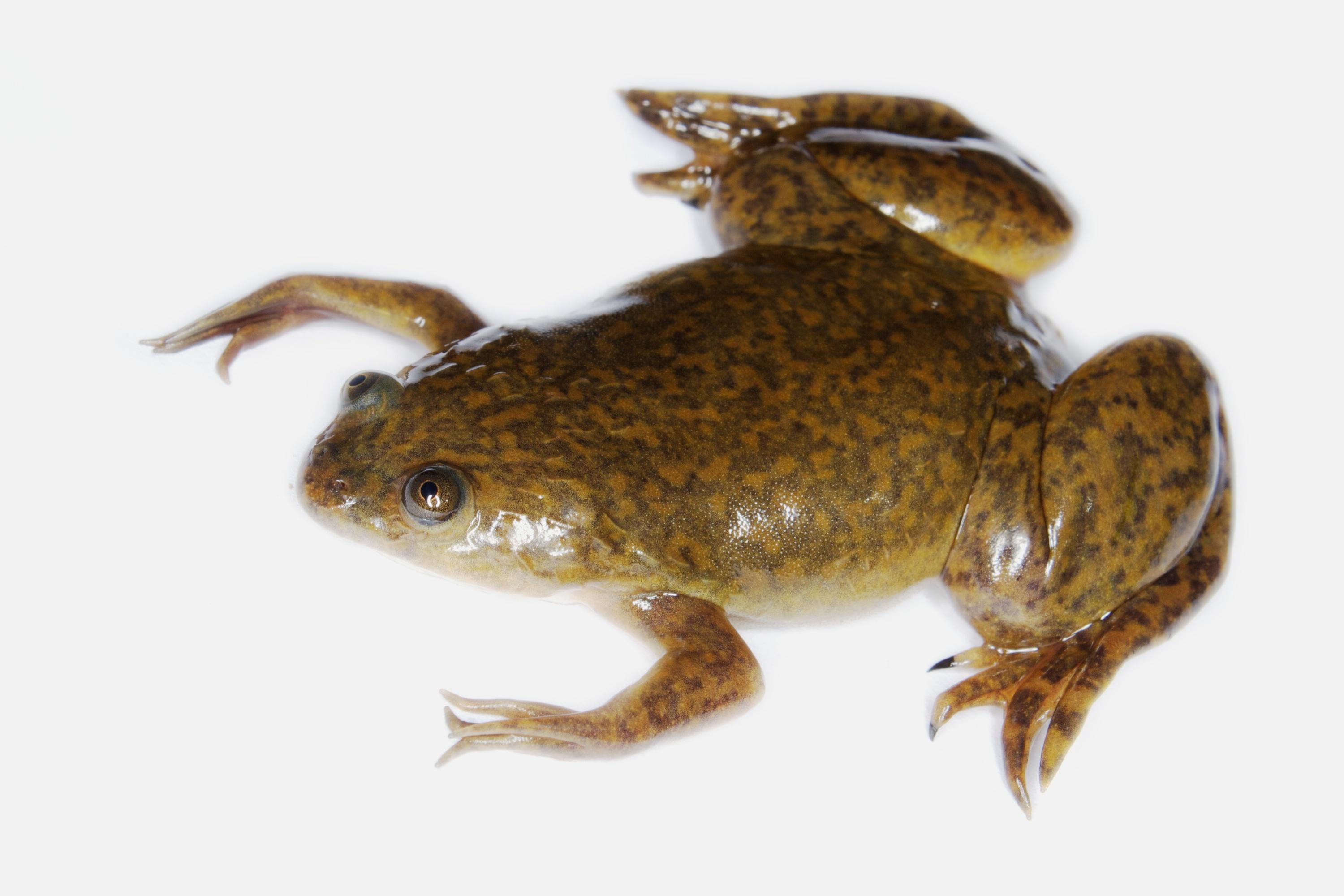
The African Clawed Frog is an aquatic species native to parts of Africa. They have a flattened body, small eyes, and webbed hind feet with claws.
Adults typically grow to 4-5 inches in length. Their skin is smooth and slimy, usually olive or brown, with darker spots.
- Region of Habitat: Sub-Saharan Africa
- Scientific Name: Xenopus laevis
- Place of Origin: Africa
- Feeding Habits: Carnivore, small fish, insects, and worms
- What Sound They Make: Underwater clicking sounds
Fun Facts: African Clawed Frogs were used as pregnancy testers in the mid-20th century. They can survive being frozen for short periods.
These frogs have transparent lower eyelids, allowing them to see underwater while protected.
African clawed frogs lack a tongue and use their hands to push food into their mouths. Due to their ability to regenerate limbs, they are often used in scientific research.
18. African Fish Eagle
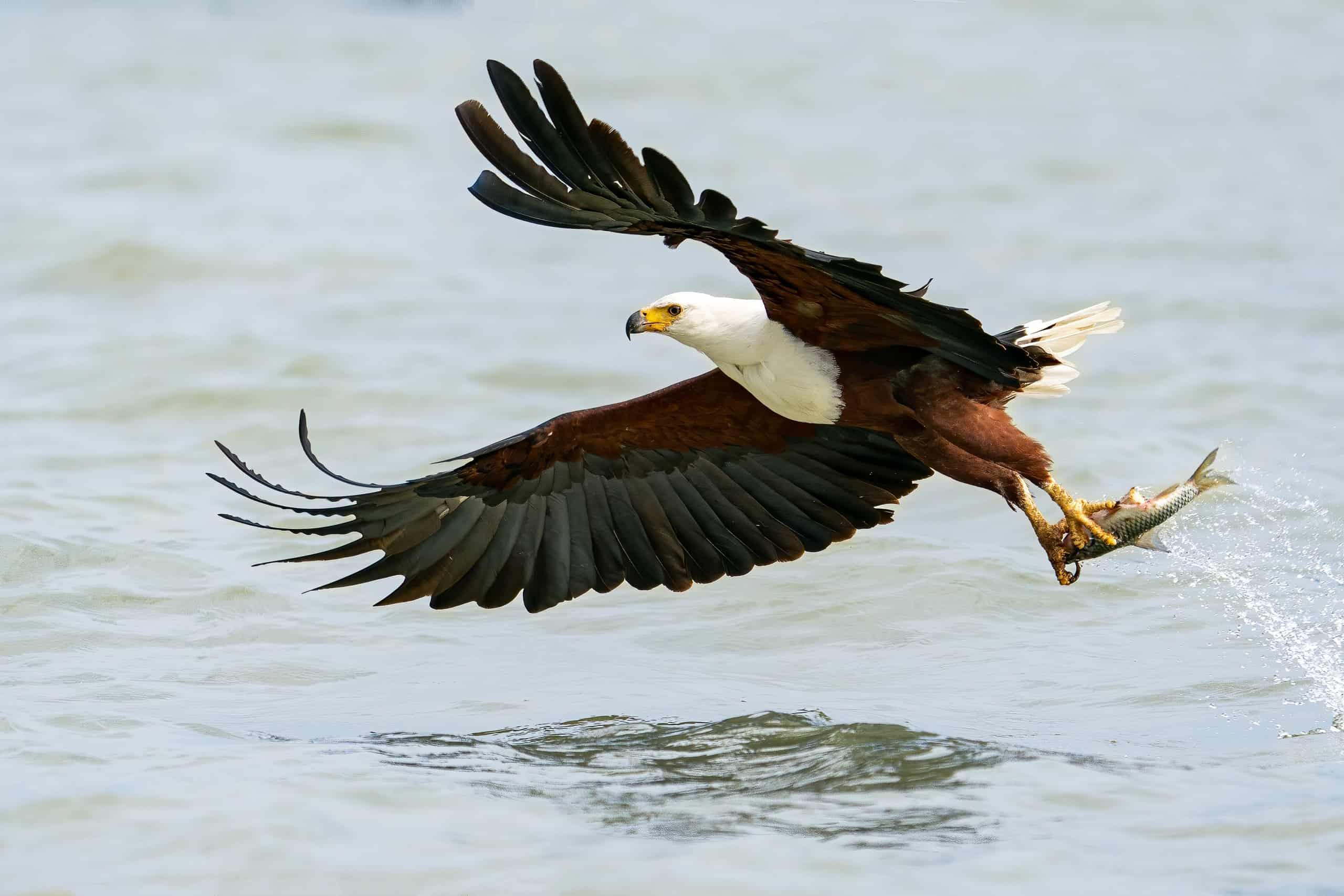
The African Fish Eagle is a large bird of prey native to sub-Saharan Africa. It has a distinctive appearance with a white head, neck, and tail contrasting with its dark brown body.
Adults have a wingspan of about 6 feet and weigh between 4 and 8 pounds. Their powerful hooked beak is yellow with a black tip.
- Region of Habitat: Sub-Saharan Africa
- Scientific Name: Haliaeetus vocifer
- Place of Origin: Africa
- Feeding Habits: Carnivore, primarily fish but also small mammals and birds
- What Sound They Make: Distinctive, loud, haunting call
Fun Facts: The African Fish Eagle is nicknamed “the voice of Africa” due to its distinctive call. They mate for life and often use the same nest for years.
These eagles can spot fish from high altitudes and swoop to snatch them from the water’s surface.
They play a crucial role in their ecosystems as top predators. In some African cultures, the African Fish Eagle is seen as a symbol of strength and beauty.
19. African Forest Elephant
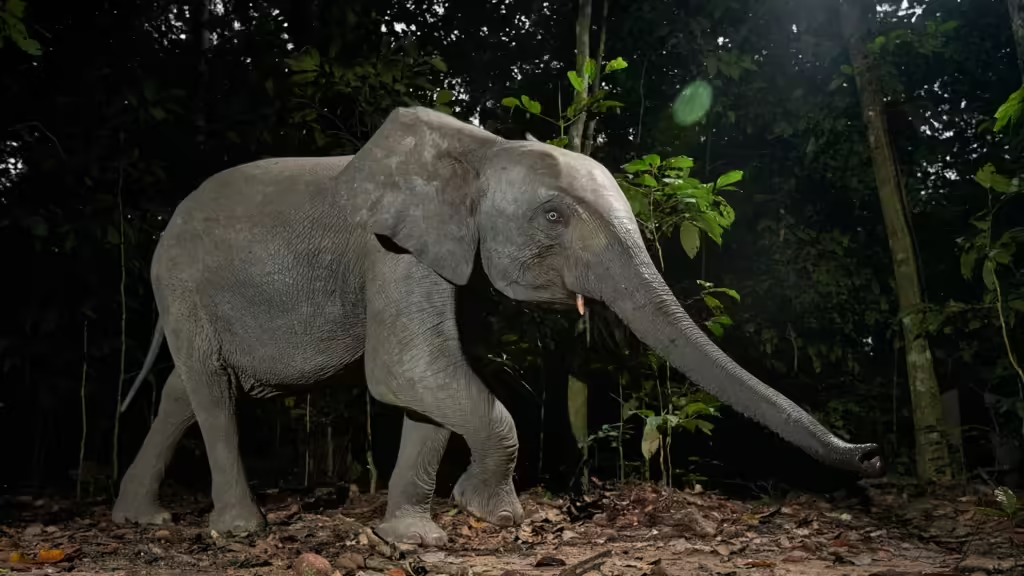
The African Forest Elephant is a smaller relative of the African Bush Elephant. It has a more compact body, rounded ears, and straighter, downward-pointing tusks.
Adults typically stand 8 to 10 feet tall at the shoulder and weigh between 4,000 and 10,000 pounds. Their skin is darker than bush elephants, often appearing nearly black.
- Region of Habitat: Central and West African forests
- Scientific Name: Loxodonta cyclotis
- Place of Origin: Africa
- Feeding Habits: Herbivore, leaves, fruit, bark, and minerals from salt licks
- What Sound They Make: Low-frequency rumbles, often inaudible to humans.
Fun Facts: African Forest Elephants play a crucial role in seed dispersal in their forest habitats.
Their tusks are straighter and harder than those of other elephant species. These elephants can live up to 60-70 years in the wild.
African forest elephants are more slender than their savanna cousins, an adaptation for moving through dense forests. However, due to habitat loss and poaching, they are critically endangered.
20. African Golden Cat
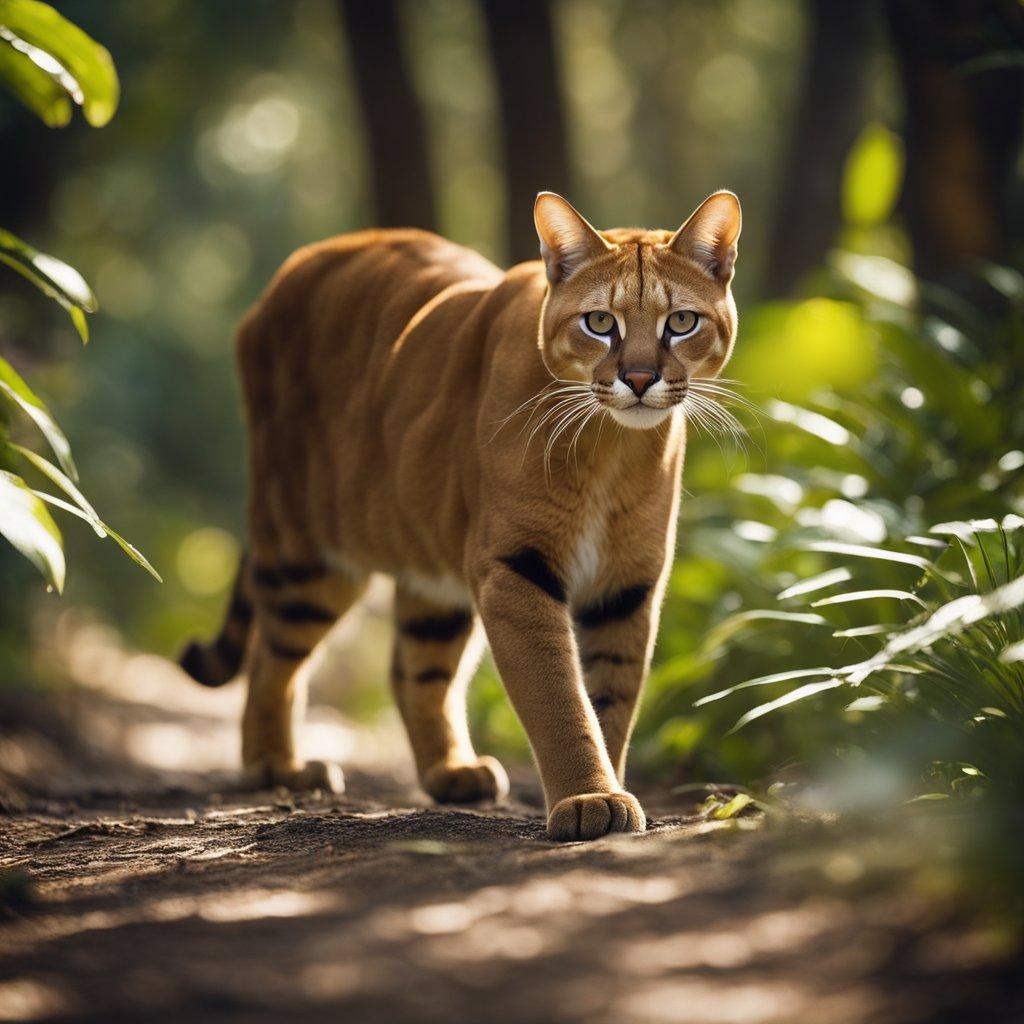
The African golden cat is a medium-sized wild cat native to the rainforests of West and Central Africa.
It has a stocky build with relatively short legs. Adults measure about 21 to 39 inches in body length and weigh between 18 to 35 pounds.
Their fur color varies from golden to reddish-brown, often with spots or stripes.
- Region of Habitat: Equatorial Africa
- Scientific Name: Caracal aurata
- Place of Origin: Africa
- Feeding Habits: Carnivore, small mammals, birds, and occasionally monkeys
- What Sound They Make: Various vocalizations, including purrs, meows, and growls
Fun Facts: The African Golden Cat was photographed in the wild only in 2002. They can change their coat color, with some individuals appearing more gray or black.
These cats are excellent tree climbers and often rest in the branches. Due to their introverted nature, they’re among the least-studied wild cat species.
Despite their name, not all African Golden Cats have golden fur.
21. African Grey Parrot
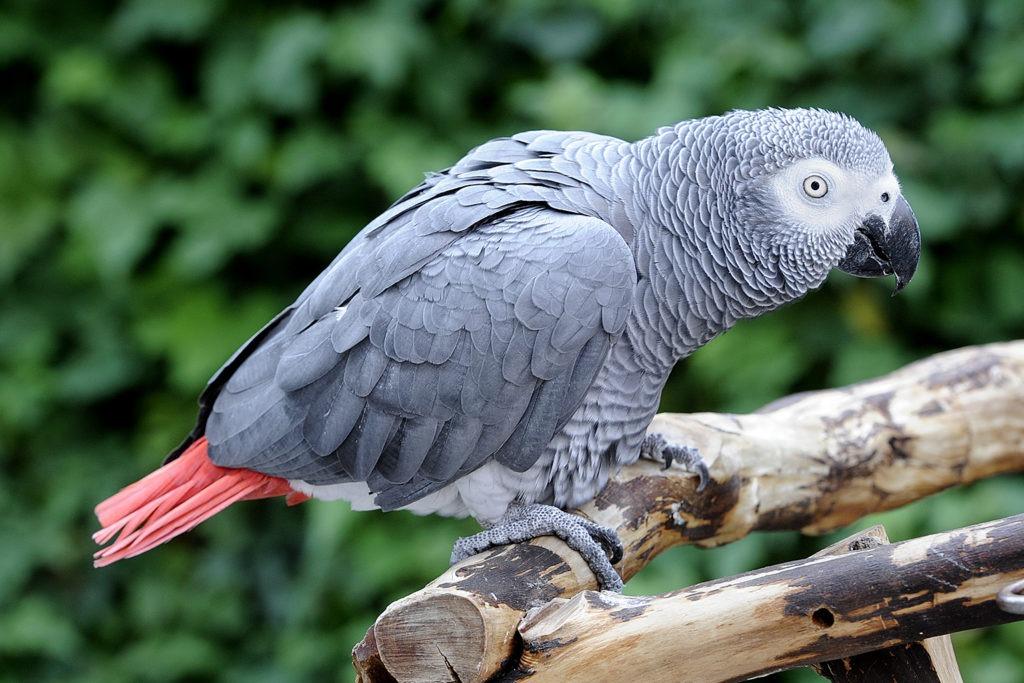
The African Grey Parrot is a medium-sized parrot native to equatorial Africa. It has a distinctive appearance, mostly gray feathers, and a bright red tail.
Adults typically measure about 12 inches in length and weigh between 0.8 to 1.2 pounds. They have a large, rounded head and a strong, curved beak.
- Region of Habitat: West and Central Africa
- Scientific Name: Psittacus erithacus
- Place of Origin: Africa
- Feeding Habits: Omnivore, seeds, nuts, fruits, and occasionally insects
- What Sound They Make: Can mimic human speech and various sounds
Fun Facts: African Grey Parrots are renowned for their intelligence and problem-solving skills.
They can mimic human speech with remarkable clarity and have shown the ability to understand some concepts. These parrots have a lifespan of up to 60 years in captivity.
They have been observed using tools in the wild, a rare trait among birds. In some African cultures, African Grey Parrots are seen as spiritual messengers.
22. African Jacana
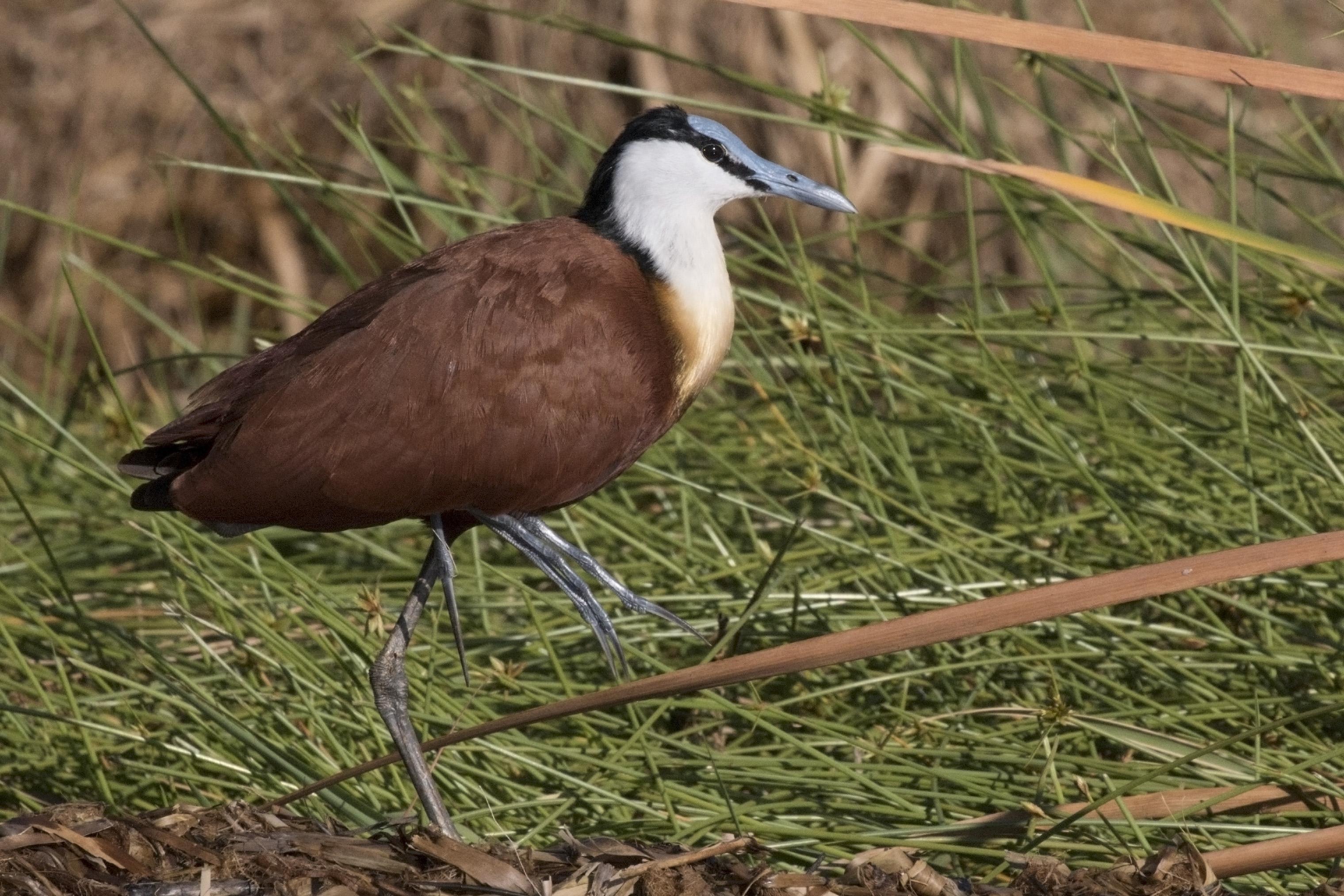
The African Jacana is a wading bird known for its extremely long toes. It has a small body with chestnut-brown plumage, a black neck and head, and yellow-brown wings.
Adults measure about 9 to 12 inches in length and weigh 4 to 8 ounces. Their most distinctive feature is their long toes, which allow them to walk on floating vegetation.
- Region of Habitat: Sub-Saharan Africa
- Scientific Name: Actophilornis africanus
- Place of Origin: Africa
- Feeding Habits: Omnivores, insects, small invertebrates, and seeds
- What Sound They Make: High-pitched chirps and trills
Fun Facts: African Jacanas are known for their unusual breeding system, in which males raise the young.
Their long toes distribute their weight, allowing them to walk on lily pads and other floating plants.
These birds are also called “Jesus birds” for their ability to appear to walk on water. They can submerge their entire body underwater to avoid predators, exposing only their bill. African Jacanas are excellent indicators of wetland health.
23. African Palm Civet
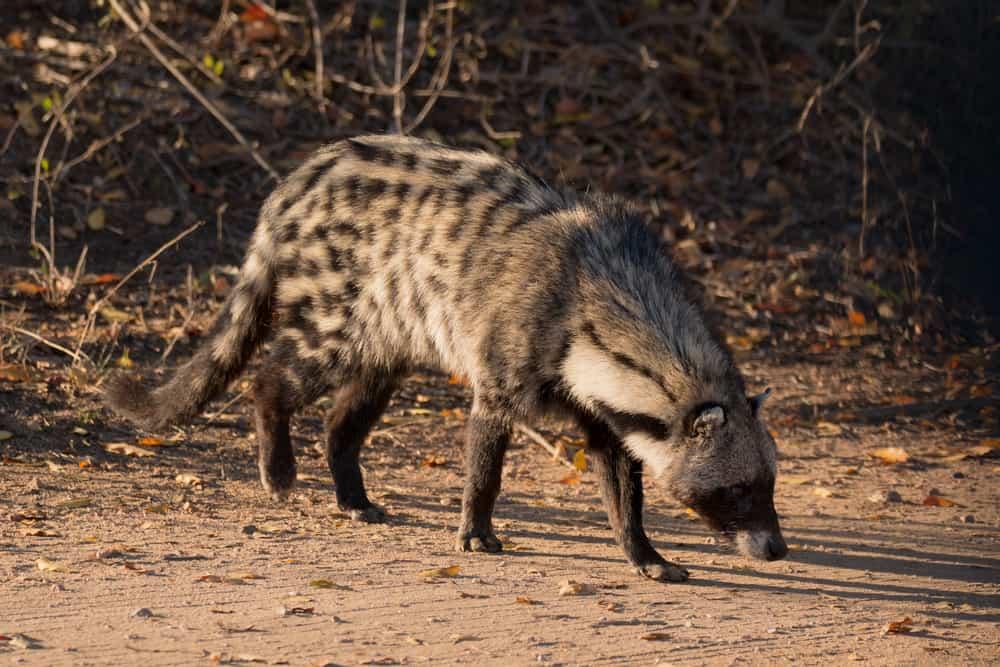
The African Palm Civet is a small mammal native to the tropical forests of Africa. It has a long, slender body with short legs and a long, prehensile tail.
Adults measure about 17 to 28 inches in body length, with a tail adding another 15 to 20 inches. They weigh between 3 and 5 pounds.
Their fur is coarse and grayish to dark brown with dark spots and stripes.
- Region of Habitat: Sub-Saharan Africa
- Scientific Name: Nandinia binotata
- Place of Origin: Africa
- Feeding Habits: Omnivore, fruits, small mammals, insects, and eggs
- What Sound They Make: Various vocalizations, including chirps and growls
Fun Facts: African Palm Civets are primarily solitary but may gather in groups to feed. Their droppings are used to make an expensive coffee called Kopi Luwak.
These animals have retractable claws like cats, which is unusual for civets. They play an important role in seed dispersal in their forest habitats.
Despite their name, they’re not closely related to true civets and are the only species in their genus.
24. African Penguin
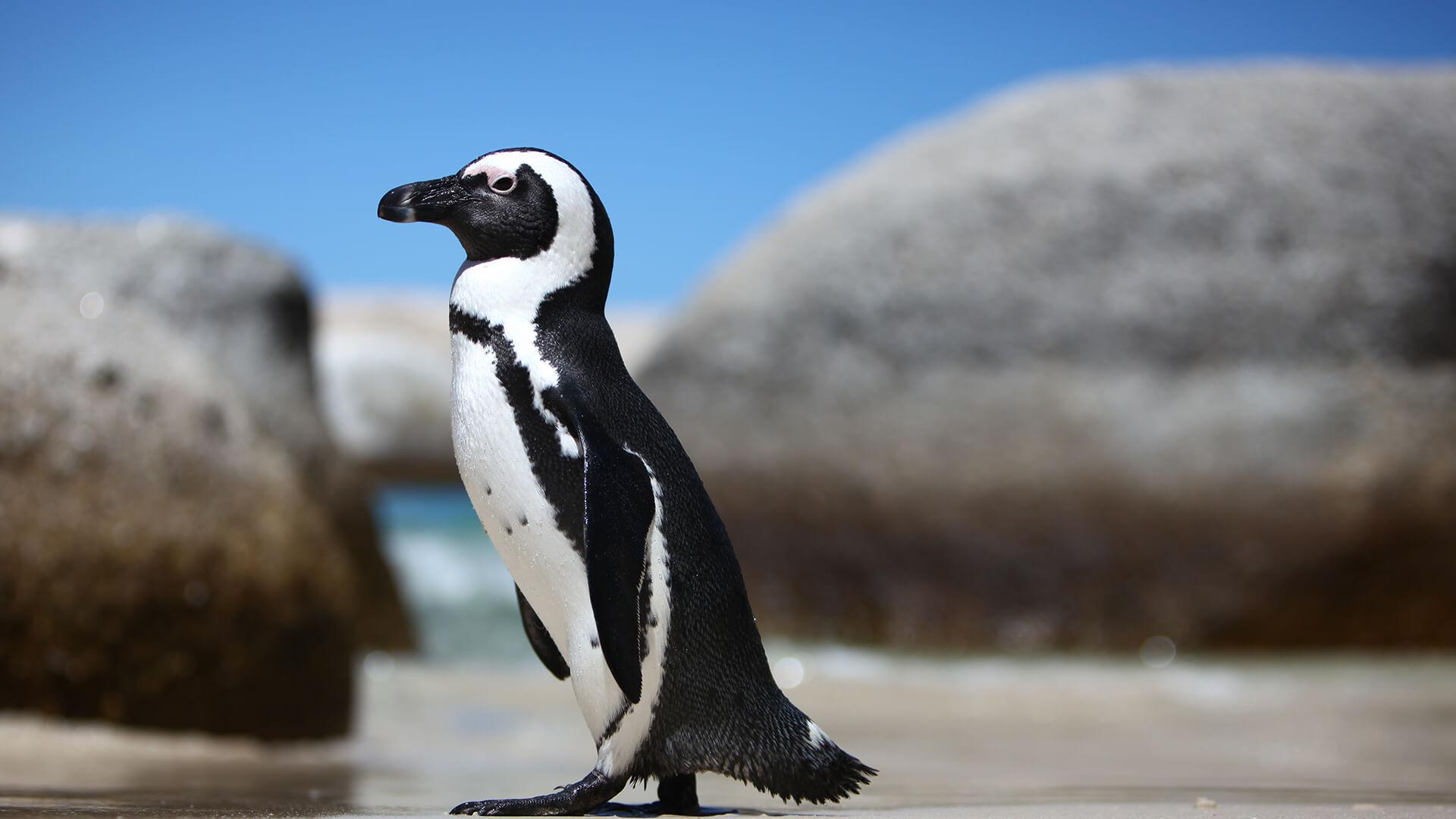
The African Penguin is a medium-sized penguin species native to the southwestern coast of Africa.
It has distinctive black and white plumage with a black stripe and black spots on its chest. Adults stand about 24 to 28 inches tall and weigh between 4.9 and 7.7 pounds. They have a black beak and pink glands above their eyes.
- Region of Habitat: Coastal areas of South Africa and Namibia
- Scientific Name: Spheniscus demersus
- Place of Origin: Africa
- Feeding Habits: Carnivore, primarily small fish like anchovies and sardines
- What Sound They Make: Loud, donkey-like braying call
Fun Facts: African Penguins are the only penguin species that breed in Africa. They’re also called “jackass penguins” due to their donkey-like braying call.
These penguins can swim at speeds up to 12 mph. Their unique pattern of black spots on their chests is as individual as a human fingerprint.
African Penguins are endangered due to habitat loss, overfishing, and oil spills.
25. African Sugarcane Borer
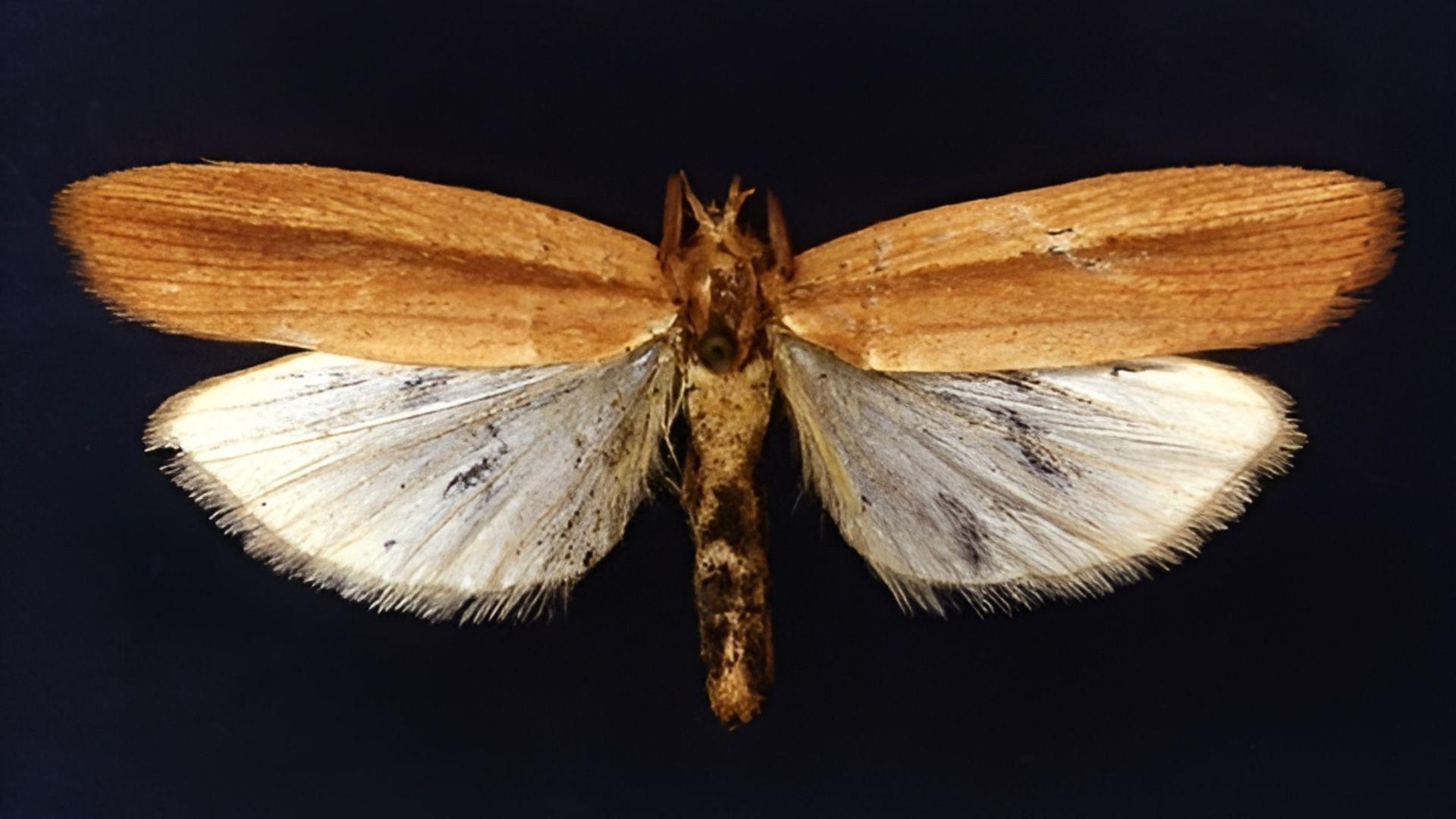
The African Sugarcane Borer is a moth species that is a significant pest in sugarcane plantations.
In their larval stage, they are cream-colored caterpillars with a brown head. Adult moths have pale brown wings with darker markings. They typically measure about 1 to 1.5 inches in wingspan.
- Region of Habitat: Sub-Saharan Africa
- Scientific Name: Eldana saccharina
- Place of Origin: Africa
- Feeding Habits: Herbivore, primarily sugarcane and maize stalks
- What Sound They Make: Silent
Fun Facts: The African Sugarcane Borer is the sole species in its genus. It’s a major pest in sugarcane plantations, causing significant economic losses.
The larvae can tunnel through hard stalks, making them difficult to control. These moths have developed resistance to many pesticides.
They play a role in their ecosystem as food for various predators, including birds and bats.
26. African Tree Toad
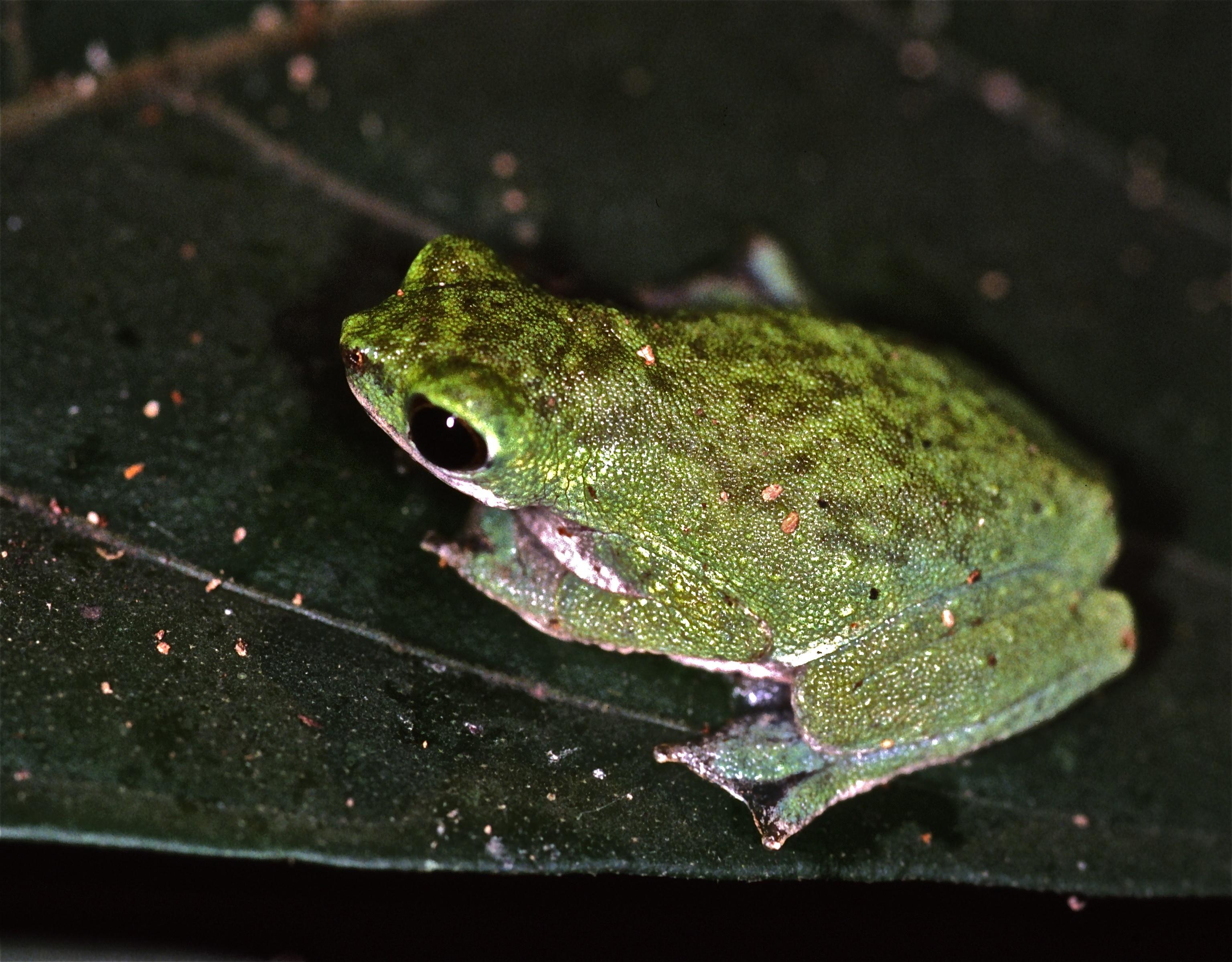
The African Tree Toad is a small amphibian species found in the tropical forests of West and Central Africa.
They have a compact body with a pointed snout and large eyes. Adults typically measure about 1 to 2 inches in length.
Their skin is warty and can vary in color from brown to green, often with darker patterns for camouflage.
- Region of Habitat: West and Central Africa
- Scientific Name: Nectophryne afra
- Place of Origin: Africa
- Feeding Habits: Carnivore, small insects, and other invertebrates
- What Sound They Make: Soft, high-pitched chirps
Fun Facts: African Tree Toads have medicinal toxins in their skin, which some indigenous peoples use for traditional remedies.
They can change color to blend with their surroundings. These toads are excellent climbers despite lacking toe pads like many tree frogs.
African tree toads lay their eggs in small water-filled tree hollows, and they control insect populations in their forest habitats.
27. African Wild Dog
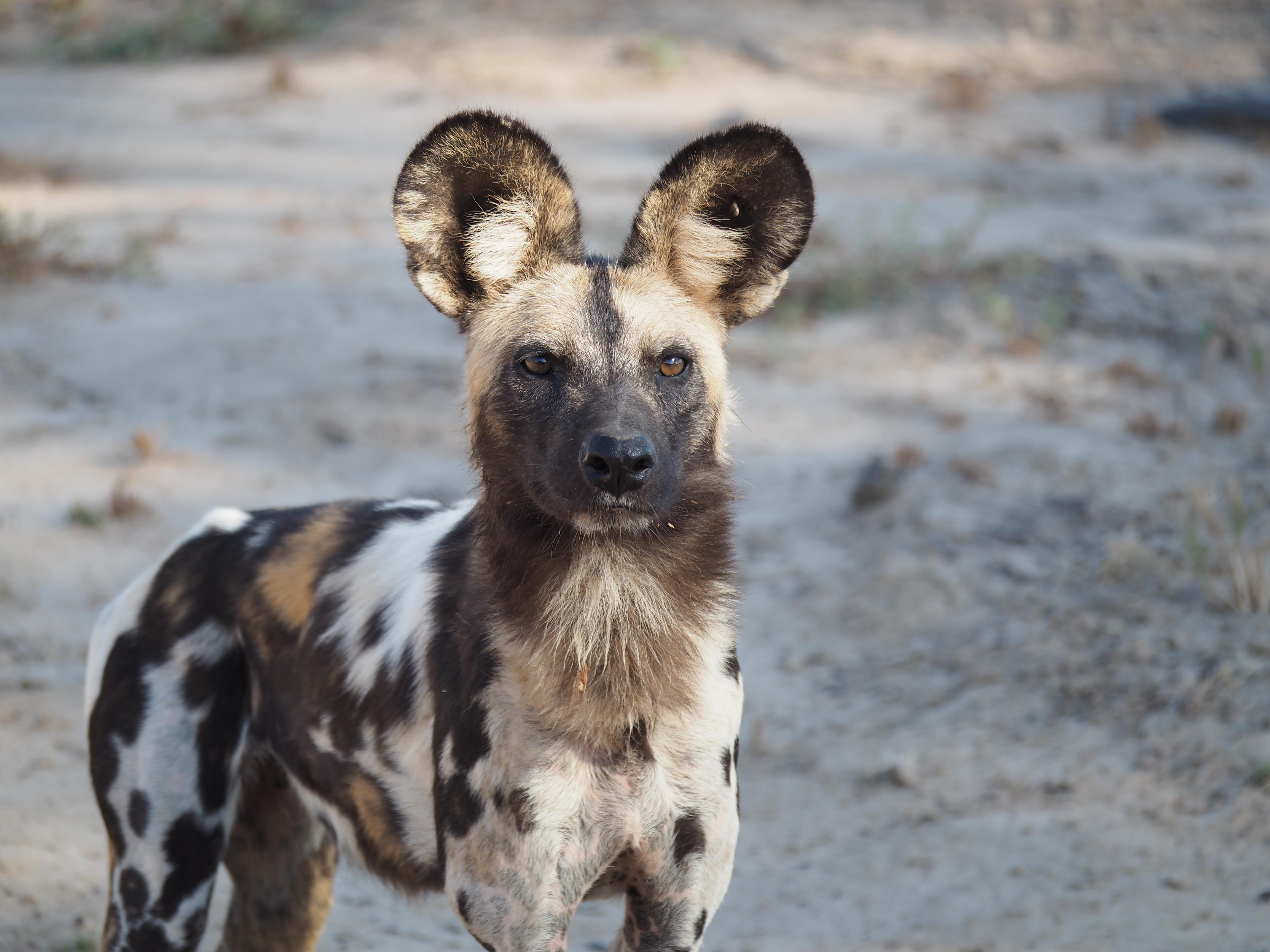
The African Wild Dog, also known as the Painted Dog, is a unique canine species native to sub-Saharan Africa.
It has a lean, muscular build with large, rounded ears. Adults typically measure 24 to 30 inches in shoulder height and weigh between 40 and 80 pounds.
Their coat is mottled with black, brown, and white patches, giving each individual a unique pattern.
- Region of Habitat: Sub-Saharan Africa
- Scientific Name: Lycaon pictus
- Place of Origin: Africa
- Feeding Habits: Carnivore, primarily medium-sized antelopes
- What Sound They Make: Various vocalizations, including chirps, squeaks, and high-pitched squeals
Fun Facts: African Wild Dogs are known for their complex social structures and cooperative hunting strategies.
They have a unique pack hierarchy that’s not based on aggression. These dogs have a bite force quotient higher than any other carnivore of their size.
They’re one of the most successful hunters in Africa, with a kill rate of about 80%. Despite their name, African Wild Dogs are not closely related to domestic dogs.
28. Africanized Bee
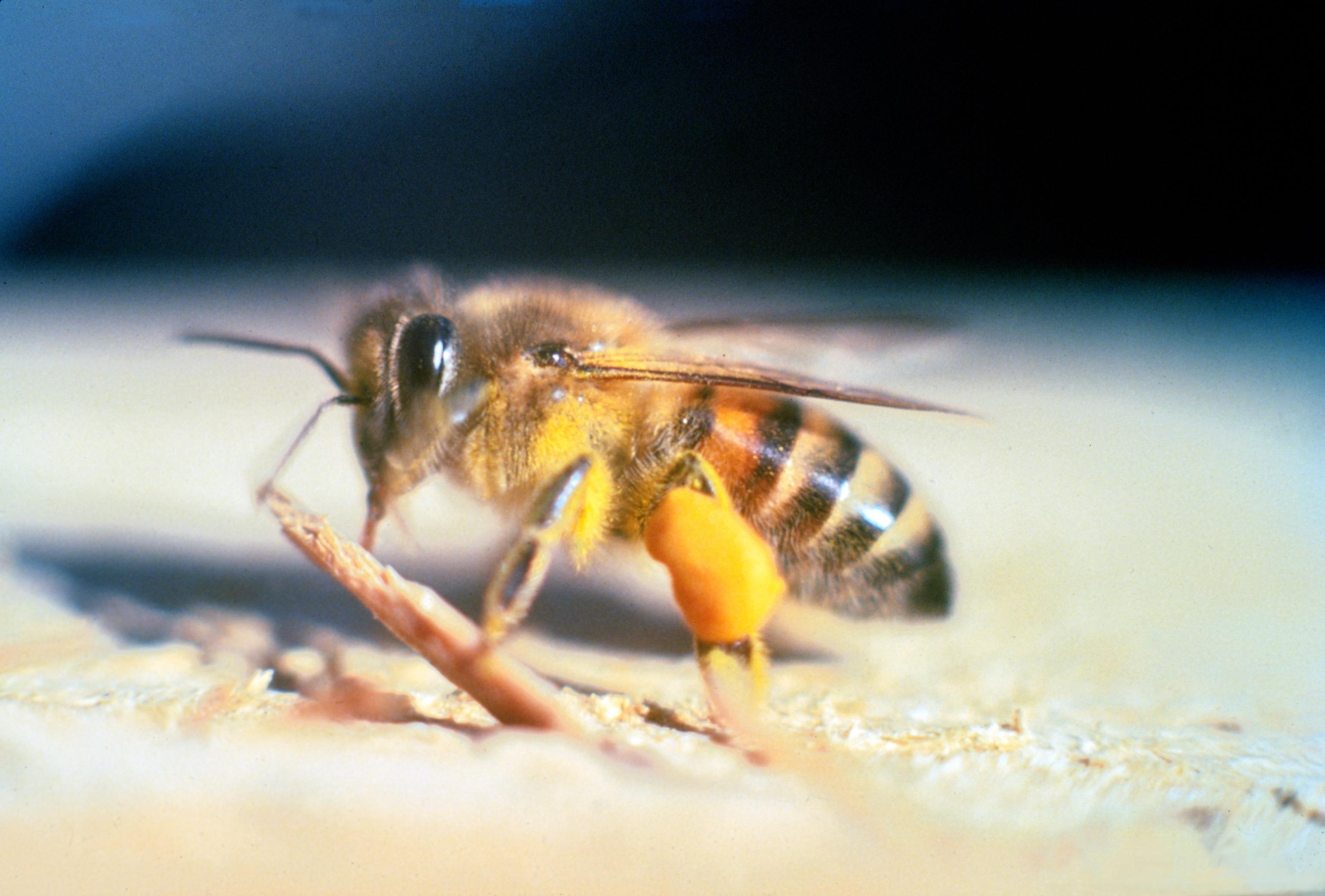
The Africanized Bee, often called the “killer bee,” is a hybrid of the Western and East African lowland honey bees.
They look very similar to European honey bees but are slightly smaller. Workers are about 1.5 cm long. They have a golden yellow color with darker brown stripes.
- Region of Habitat: Americas, from Argentina to the southern United States
- Scientific Name: Apis mellifera scutellata
- Place of Origin: Brazil (via Africa)
- Feeding Habits: Nectar and pollen from flowers
- What Sound They Make: Buzzing, similar to other honey bees
Fun Facts: Africanized Bees are known for their aggressive behavior and can chase perceived threats up to a quarter mile.
They’re a result of cross-breeding experiments in Brazil in the 1950s. These bees can take over European honey bee hives.
Despite their nickname, Africanized bees are not more venomous than other honey bees—their danger comes from attacking in larger numbers. Africanized Bees are important pollinators in their ecosystems.
29. Agama Lizard
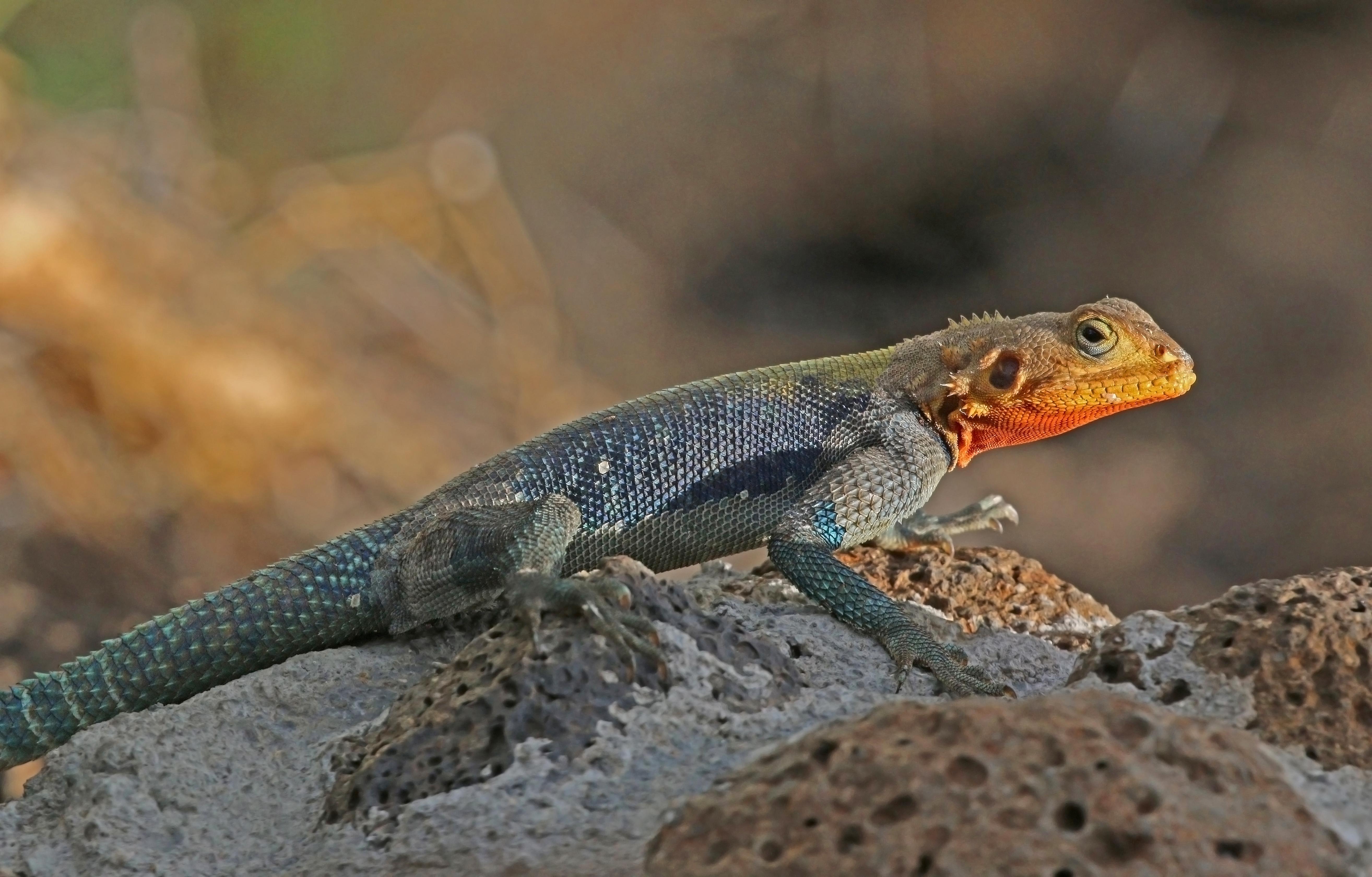
The Agama Lizard is a group of small—to medium-sized lizards found throughout Africa. It has a powerful body, a large head, and a long tail.
Adults typically measure 8 to 12 inches in total length. Males are often brightly colored, especially during breeding season, while females are duller.
- Region of Habitat: Africa
- Scientific Name: Agama (genus)
- Place of Origin: Africa
- Feeding Habits: Omnivore, insects, plants, and small vertebrates
- What Sound They Make: Generally silent, may make soft hissing sounds when threatened
Fun Facts: Male Agamas often turn bright blue during mating season. They can detach their tails to escape predators and regrow them over time.
Agamas perform push-ups as a territorial display. These lizards are excellent climbers and can often be seen basking on rocks or walls.
Some species of Agamas can change color rapidly, although not to the extent of chameleons.
30. Agkistrodon Contortrix
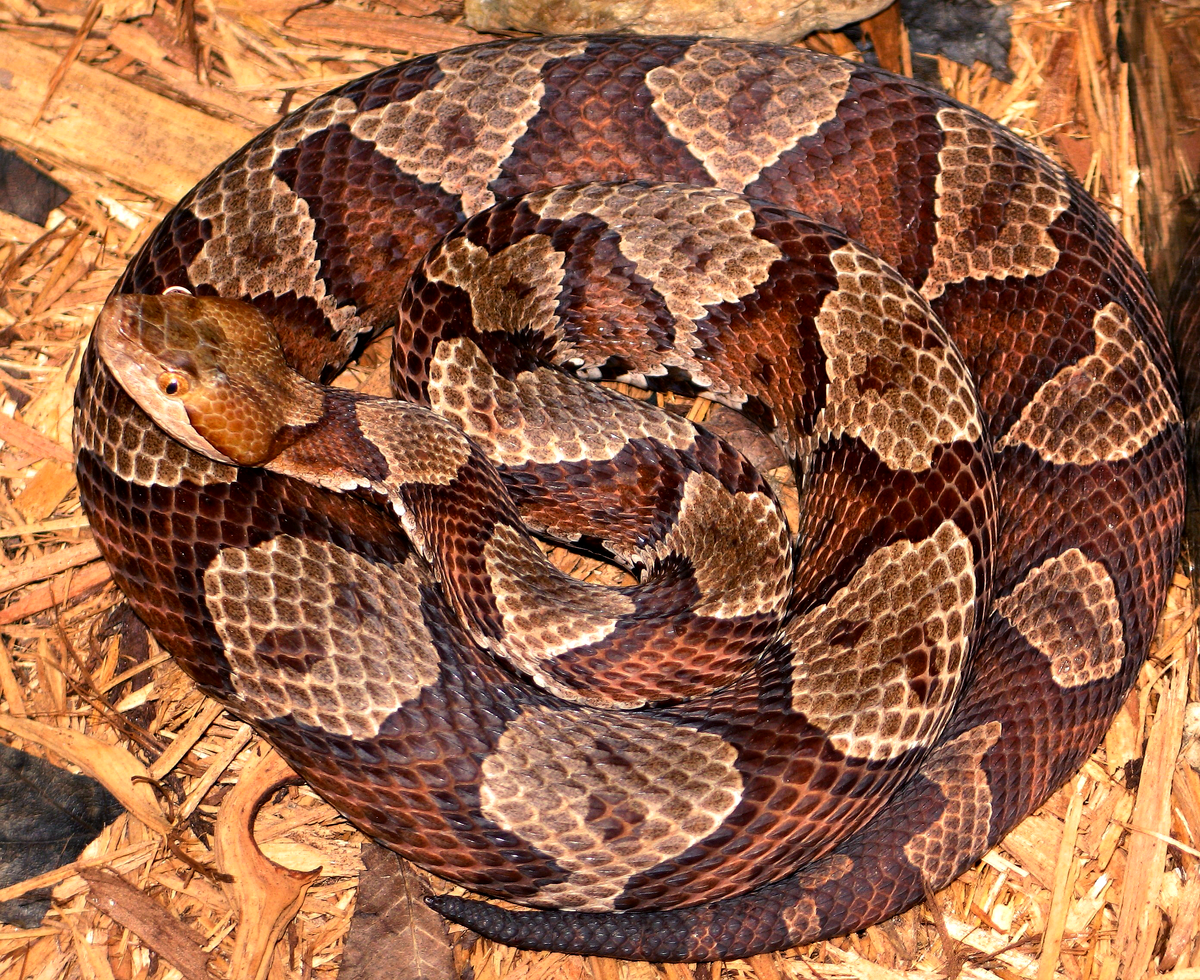
The Agkistrodon Contortrix, commonly known as the Copperhead, is a venomous snake species found in North America.
They have a thick body with a triangular head and heat-sensing pits between the eyes and nostrils.
Adults typically measure 2 to 3 feet in length. Their coloration is tan to brown with darker hourglass-shaped crossbands.
- Region of Habitat: Eastern and Central United States
- Scientific Name: Agkistrodon contortrix
- Place of Origin: North America
- Feeding Habits: Carnivore, small mammals, birds, amphibians, and insects
- What Sound They Make: Silent, may vibrate their tail as a warning
Fun Facts: Copperheads often “freeze” when encountering humans, relying on their camouflage.
Their venom is hemolytic, destroying red blood cells. Young copperheads have yellow-tipped tails, which they use to lure prey.
These snakes are responsible for the most venomous snake bites in the United States, but their bites are rarely fatal to humans. Copperheads play a crucial role in controlling rodent populations.
31. Agouti
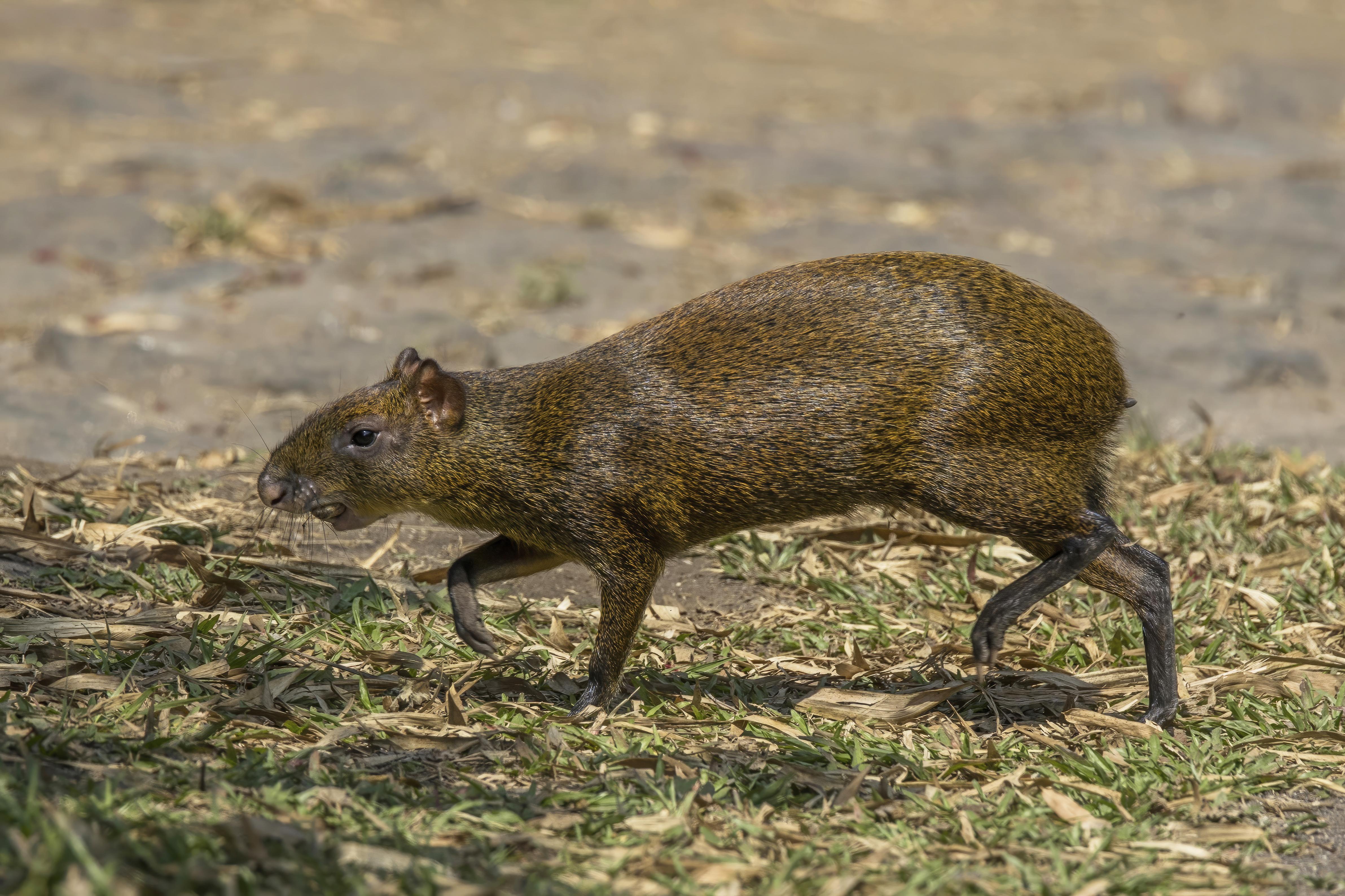
The Agouti is a rodent species native to Central and South America. It has a compact body with short legs and a small tail.
Adults typically measure 16 to 24 inches in body length and weigh between 6 and 13 pounds.
Their fur is coarse and ranges from reddish to dark brown, often with a lighter underside.
- Region of Habitat: Central and South America
- Scientific Name: Dasyprocta (genus)
- Place of Origin: Americas
- Feeding Habits: Herbivore, fruits, nuts, and seeds
- What Sound They Make: Various vocalizations, including grunts and squeaks
Fun Facts: Agoutis are among the few animals that can open Brazil nut pods. They play a crucial role in seed dispersal in tropical forests.
These rodents can jump up to six feet high. Agoutis are known for burying excess food, which helps in forest regeneration.
They have excellent hearing and can survey their surroundings on their hind legs.
32. Aidi

The Aidi, also known as the Atlas Mountain Dog, is a large breed native to North Africa. It has a muscular body and a thick, weather-resistant coat.
Adults typically stand 20 to 24 inches at the shoulder and weigh between 50 to 55 pounds.
Their coat can be in various colors, including fawn, brindle, black, or white.
- Region of Habitat: Morocco’s Atlas Mountains
- Scientific Name: Canis lupus familiaris
- Place of Origin: North Africa
- Feeding Habits: Omnivore, commercial dog food, and occasional treats
- What Sound They Make: Barks, growls, and howls
Fun Facts: Aidi dogs were traditionally used by the Berber people to protect livestock from predators.
They have a cheerful personality and are known for their loyalty to their owners. Their excellent hearing and sight make them effective watchdogs.F
Aidis are rarely seen outside their native North Africa. Due to their double coat, they’re well-adapted to both hot and cold climates.
33. Ainu
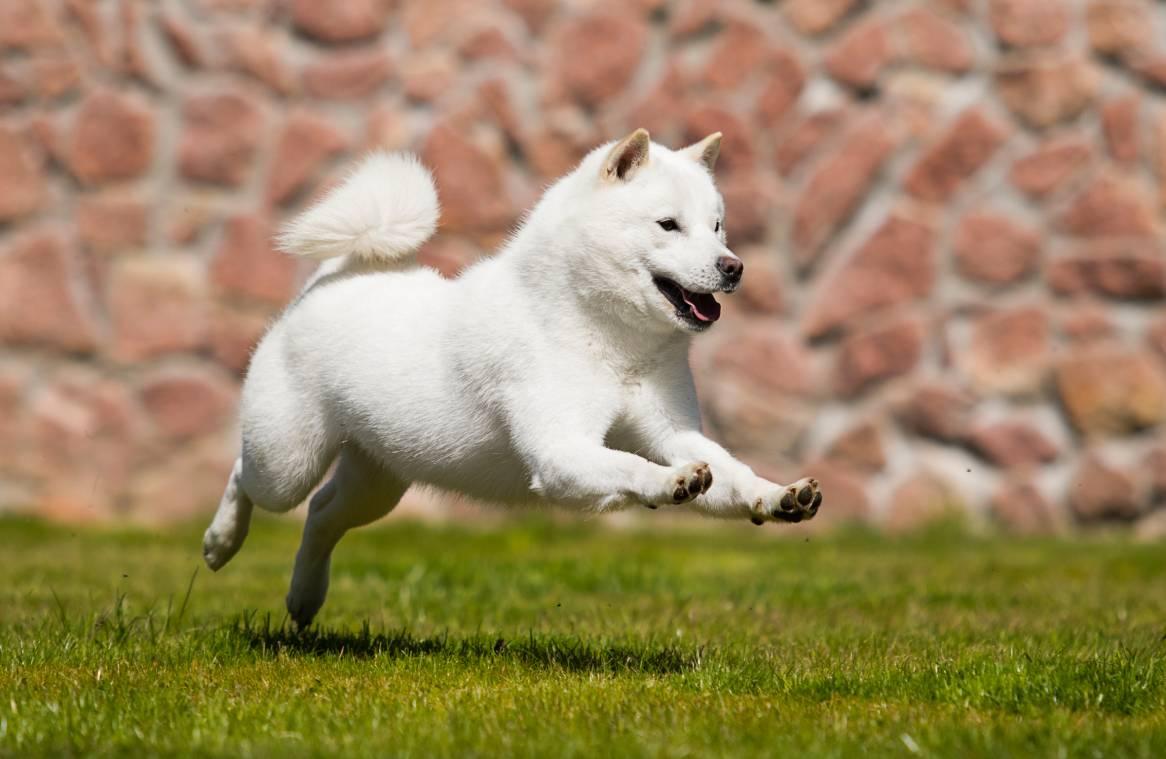
The Ainu is a Japanese dog breed, also known as the Hokkaido. It has a medium-sized, compact body and a thick double coat.
Adults typically stand 18 to 20 inches at the shoulder and weigh between 44 and 66 pounds. Their coats are usually white, red, brindle, or sesame (red fawn with black tips).
- Region of Habitat: Japan, primarily Hokkaido
- Scientific Name: Canis lupus familiaris
- Place of Origin: Japan
- Feeding Habits: Omnivore, commercial dog food, and occasional treats
- What Sound They Make: Barks, howls, and a unique “murmur moan.”
Fun Facts: Ainu dogs have an innate sense of direction and were used for hunting bears in ancient times.
They’re known for their loyalty and strong bond with their owners. These dogs have a unique vocalization called the “murmur moan” used to express affection.
Ainus is one of the oldest and rarest Japanese dog breeds. It is well-adapted to cold climates and was essential to the survival of the Ainu people of Hokkaido.
34. Airedale Terrier
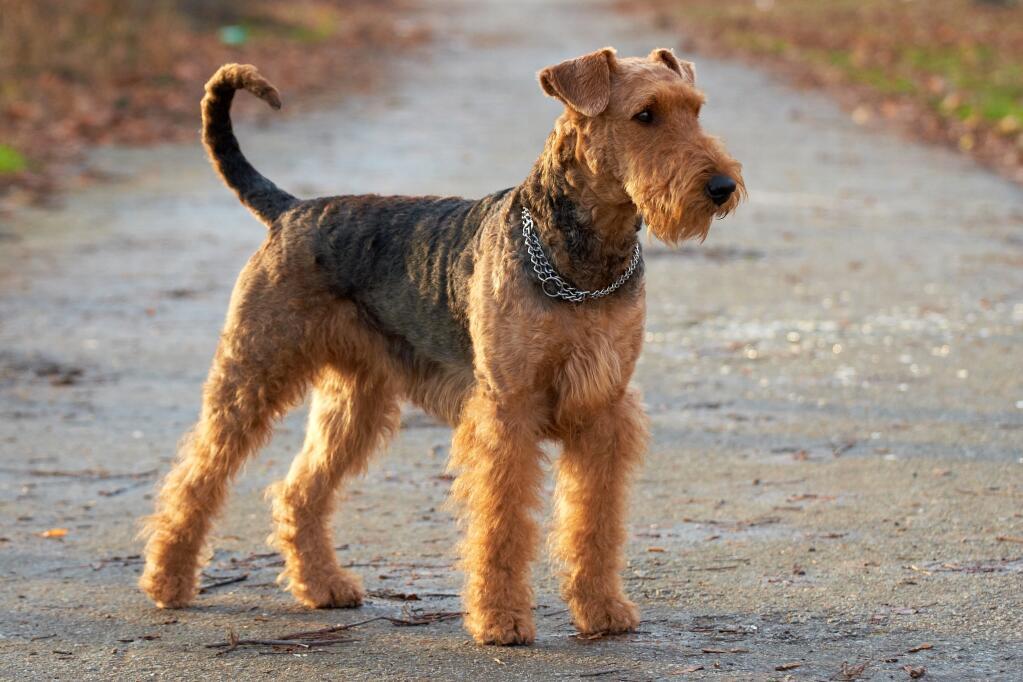
The Airedale Terrier is the largest of all terrier breeds. It has a tall, muscular body with a distinctive beard and eyebrows.
Adults typically stand 23 inches at the shoulder and weigh between 50 and 70 pounds.
Their coat is dense and wiry, normally tan with black saddle markings.
- Region of Habitat: Domestic (worldwide)
- Scientific Name: Canis lupus familiaris
- Place of Origin: Aire Valley, England
- Feeding Habits: Omnivore, commercial dog food, and occasional treats
- What Sound They Make: Barks, growls, and occasionally howls
Fun Facts: Airedale Terriers are often called the “King of Terriers” due to their size. They were used as messenger dogs and aided wounded soldiers during World War I.
These dogs are known for their intelligence and versatility. They excel in various dog sports and activities. Airedales have a high pain tolerance, which sometimes leads to them ignoring injuries.
They have a playful nature and are known to retain puppy-like behaviors well into adulthood.
35. Akbash
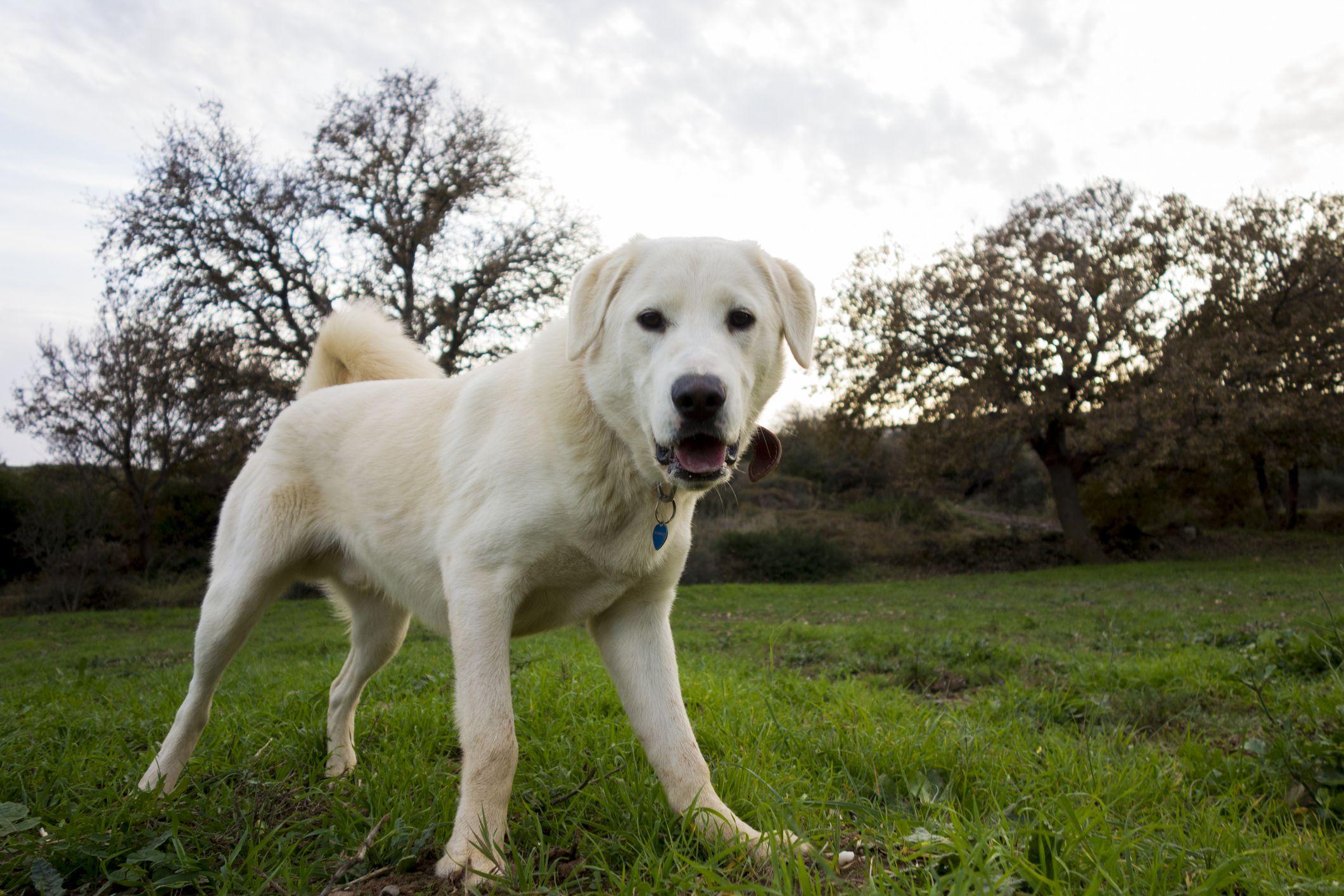
The Akbash is a large livestock guardian dog breed from Turkey. It has a muscular body and a thick, white double coat.
Adults typically stand 28 to 34 inches at the shoulder and weigh between 90 to 130 pounds.
Their coat is always white, which helped them blend in with the flocks they protected.
- Region of Habitat: Originally Turkey, now worldwide
- Scientific Name: Canis lupus familiaris
- Place of Origin: Turkey
- Feeding Habits: Omnivore, commercial dog food, and occasional treats
- What Sound They Make: Deep, resonant barks
Fun Facts: Akbash dogs have been used as livestock guardians in Turkey for thousands of years.
Akbash are known for their independence and protective nature. They have excellent night vision and hearing, making them effective guardians. Akbash are relatively rare outside of Turkey.
They’re known for their gentle nature with their family and livestock, contrasting their fierce protection against predators.
36. Akita
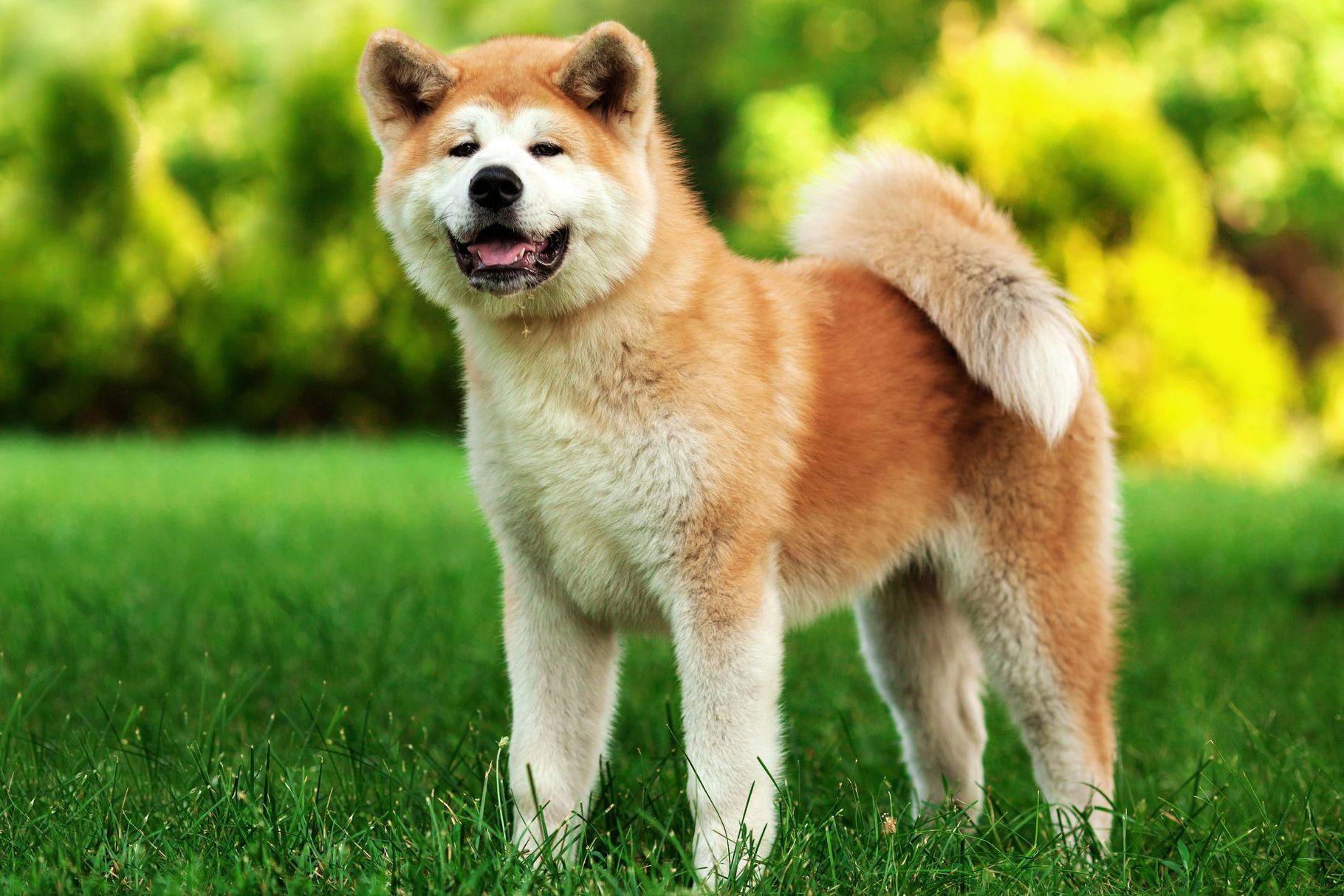
The Akita is a large breed of dog originating from the mountainous regions of northern Japan. It has a powerful, muscular body with a thick double coat.
Adults typically stand 24 to 28 inches at the shoulder and weigh between 70 and 130 pounds. Their coat can be of various colors, including brindle, white, and pinto.
- Region of Habitat: Originally Japan, now worldwide
- Scientific Name: Canis lupus familiaris
- Place of Origin: Japan
- Feeding Habits: Omnivore, commercial dog food and occasional treats
- What Sound They Make: Low, gruff barks and sometimes howls
Fun Facts: Akitas were once the exclusive property of the Japanese imperial family.
They’re known for their loyalty. A famous Akita named Hachiko has been waiting for his deceased owner at a train station for nine years.
These dogs are considered a national treasure in Japan. Akitas are known for being clean and often groom themselves like cats.
They have a strong prey drive and are often used for hunting large game in their native Japan.
37. Alabai
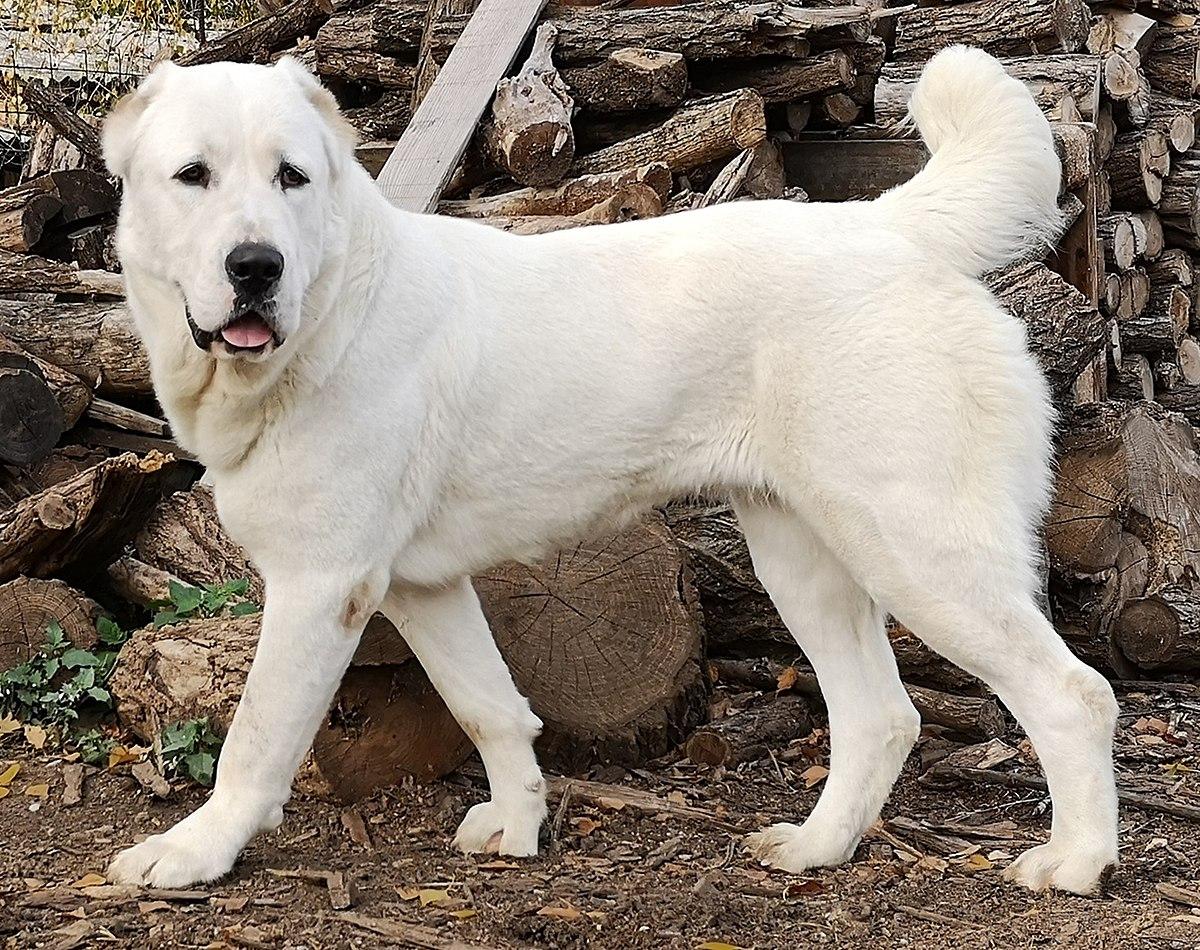
The Alabai, the Central Asian Shepherd Dog, is a large livestock guardian breed with a massive, muscular body and thick double coat.
Adults typically stand 25 to 28 inches at the shoulder and weigh between 88 and 176 pounds. Their coat can be of various colors, including black, brindle, or white.
- Region of Habitat: Central Asia, now worldwide
- Scientific Name: Canis lupus familiaris
- Place of Origin: Central Asia
- Feeding Habits: Omnivore, commercial dog food, and occasional treats
- What Sound They Make: Deep, powerful barks
Fun Facts: Alabai dogs are one of the oldest known breeds, with genetic studies suggesting they’ve been around for over 5,000 years.
They were traditionally used to protect livestock from predators like wolves. These dogs are known for their independence and strong protective instincts.
Alabais are highly intelligent but can be challenging to train due to their independent nature.
They have an incredibly high pain tolerance, which helps them fight against predators.
38. Alaskan Husky
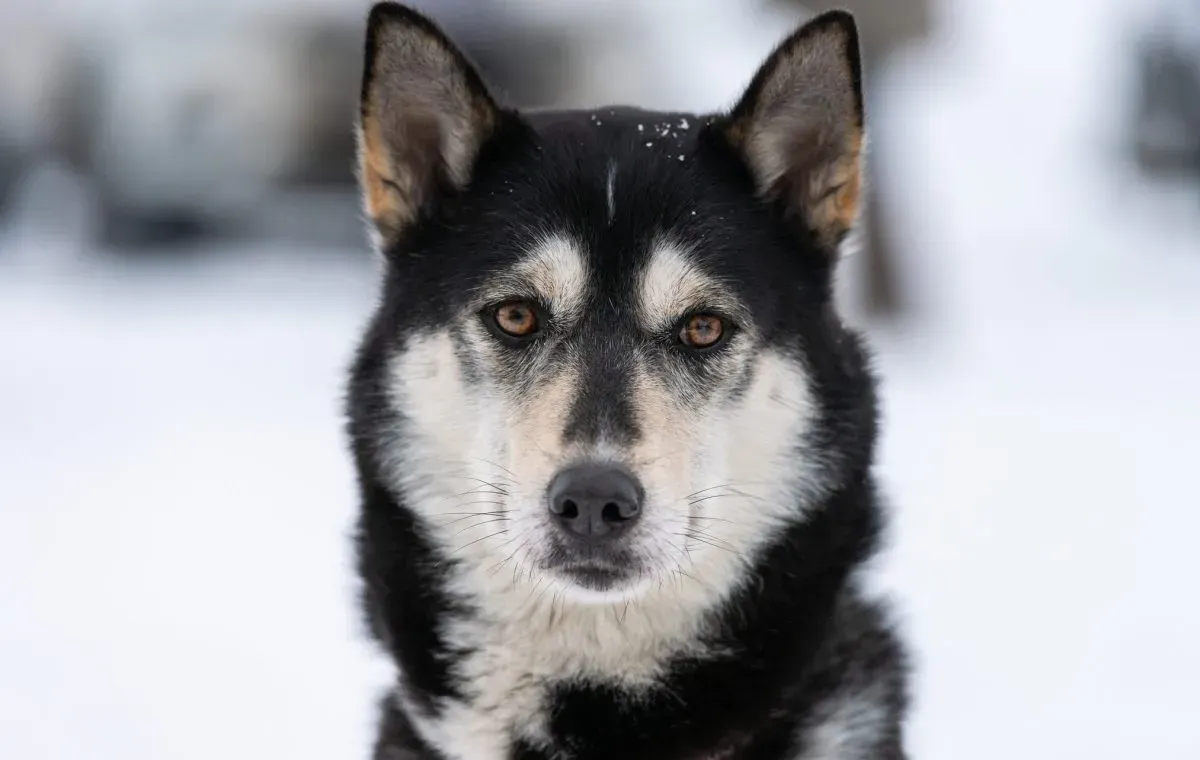
The Alaskan Husky is not a recognized breed but a dog breed specifically for sledding. It has a medium-sized, athletic body with a thick double coat.
Adults typically stand 21 to 25 inches at the shoulder and weigh between 35 and 60 pounds. Their coat can be any color or pattern.
- Region of Habitat: Alaska and northern regions
- Scientific Name: Canis lupus familiaris
- Place of Origin: Alaska, USA
- Feeding Habits: Omnivore, high-protein diet for working dogs
- What Sound They Make: Howls, barks, and distinctive “talk-howl”
Fun Facts: Alaskan Huskies are bred for performance rather than appearance, resulting in a diverse-looking group.
They’re among the most common sled dog types and can burn up to 10,000 calories daily during races.
These dogs have exceptional endurance and can run for hours in sub-zero temperatures. Alaskan Huskies are known for their friendly, outgoing personalities.
They often have heterochromia, meaning their eyes are two different colors.
39. Alaskan Malamute
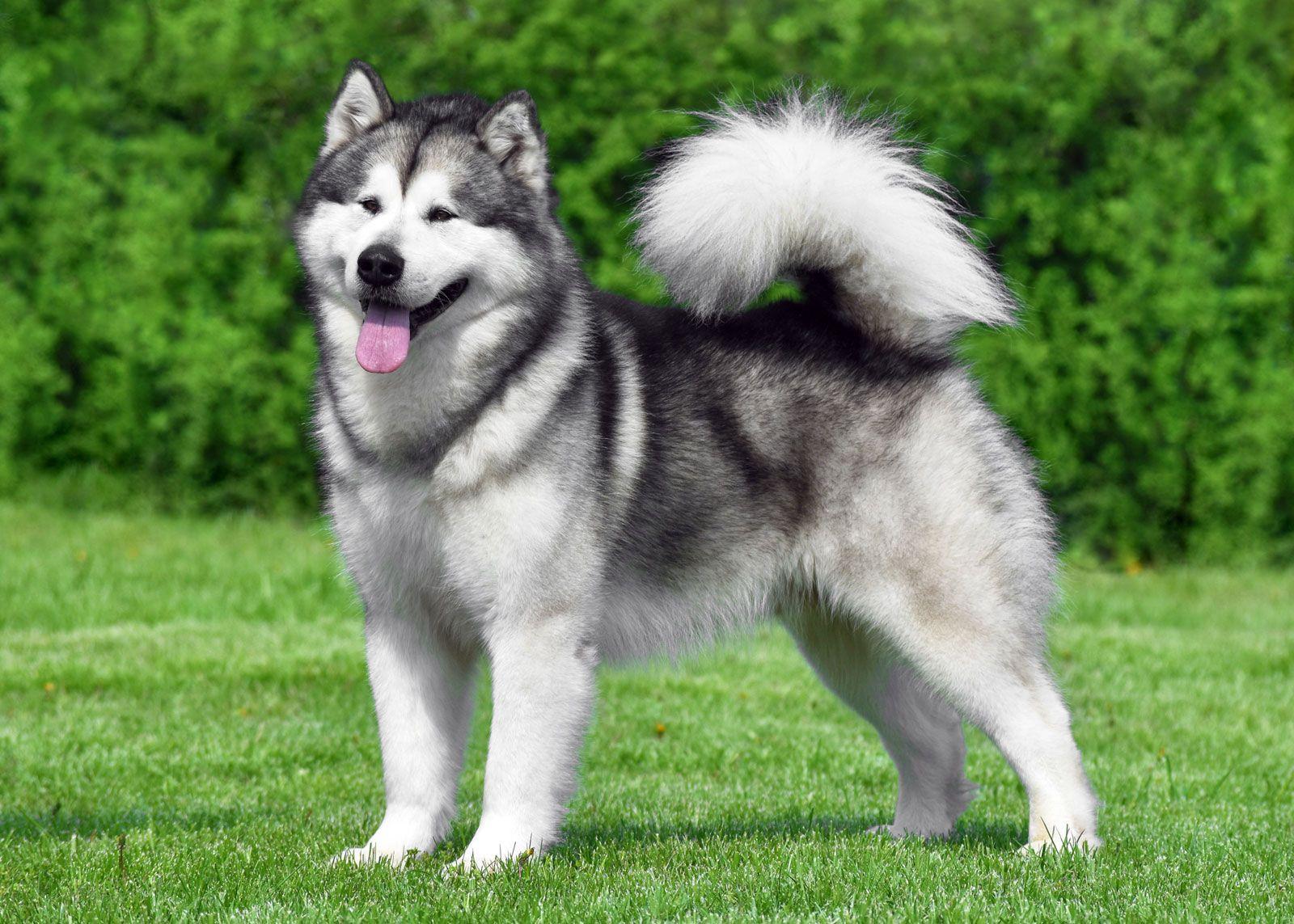
The Alaskan Malamute is a large domestic dog originally bred for hauling heavy freight. It has a powerful, muscular body with a thick double coat.
Adults typically stand 23 to 25 inches at the shoulder and weigh between 75 and 100 pounds. Their coat is usually gray and white or black and white.
- Region of Habitat: Originally Alaska, now worldwide
- Scientific Name: Canis lupus familiaris
- Place of Origin: Alaska, USA
- Feeding Habits: Omnivore, commercial dog food, and occasional treats
- What Sound They Make: Howls, “woo woo” vocalizations, rarely barks
Fun Facts: Alaskan Malamutes are among the oldest Arctic sled dog breeds. They’re named after the Mahlemut Inuit tribe, which first bred them.
These dogs are known for their strength and endurance, and they are capable of pulling heavy loads over long distances.
Malamutes are highly intelligent but can be stubborn, making training challenging. They have a thick double coat to withstand extremely cold temperatures.
40. Albatross
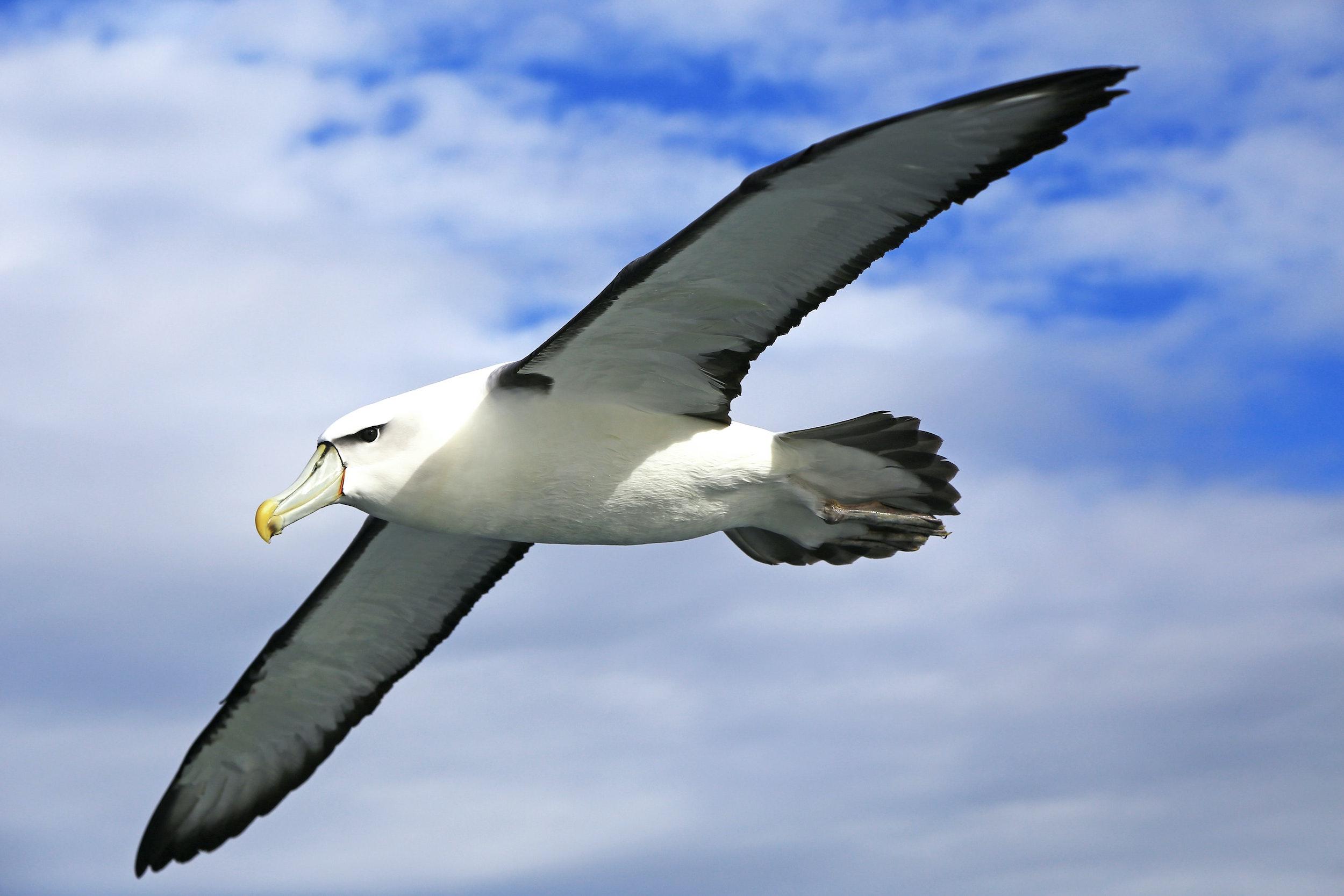
The Albatross is a large seabird that breeds in the Southern Ocean and North Pacific. Its wingspan is the largest of any bird, reaching up to 11 feet in some species.
Adults can weigh between 6 and 26 pounds, depending on the species. Their plumage is typically white with black on the upper wings.
- Region of Habitat: Southern Ocean and North Pacific
- Scientific Name: Diomedeidae (family)
- Place of Origin: Various oceanic regions
- Feeding Habits: Carnivore, squid, fish, and krill
- What Sound They Make: Various calls, including whistles, groans, and bill-clapping
Fun Facts: Albatrosses can fly for hours without flapping their wings, using dynamic soaring. They have a lifespan of 50 years or more and form long-term pair bonds.
Albatrosses spend most of their lives at sea, coming to land only to breed. They have an excellent sense of smell, which is unusual for birds, and helps them locate food in the vast ocean.
Many albatross species are endangered due to longline fishing, which has introduced predators to their breeding islands.
Final Words
As we wrap up our journey through the world of “Animals with A,” we hope you’ve gained a new appreciation for the diversity of life on our planet.
From the aardvark’s long snout to the albatross’s impressive wingspan, each creature showcases nature’s creativity.
These animals play crucial roles in their ecosystems, whether they’re pollinating plants, controlling pest populations, or serving as indicators of environmental health.
What’s next? Consider learning more about conservation efforts for these species, especially those facing habitat threats.
You might even find ways to support wildlife in your backyard. Remember, every animal, no matter how small or unusual, contributes to the balance of our natural world.

